Evacuating my Life in Records - In 15 Minutes... PART 1
Choices and Reflections from the Los Angeles Wildfires of 2025

“Tyger Tyger, burning bright,
In the forests of the night;
What immortal hand or eye,
Could frame thy fearful symmetry?
In what distant deeps or skies.
Burnt the fire of thine eyes?
On what wings dare he aspire?
What the hand, dare seize the fire?”
(William Blake)
It was about 7:45pm last Friday night when I texted my daughter.
“New mandatory evacuations going from Mandeville Canyon up to 405, north of Sunset going up to Encino. Thinking we may get a warning in next 12 hours.”
“Ah s**t!” came the reply.
Then events moved very quickly. The fire in the Palisades was coming north and east fast, right towards us.
(We’d been here before, some 6 years ago in 2019, when the Sepulveda Pass through which the 405 freeway courses had burned suddenly one night. We had gotten notice to evacuate at 3 in the morning. We live about a 1/4 mile from the 405).
Just over an hour later I texted my daughter an update:
“Car is packed with photo albums, sleeping bags and tent. Everything else is ready to go. They [the fire department] are piling everything into Brentwood. My huge worry is Bel-Air. We may be evacuated if it gets into [Sepulveda] Pass but barring a stray ember I think the house will be okay unless UCLA burns. We can see the red glow from the courtyard…. They will do everything to stop UCLA burning.”
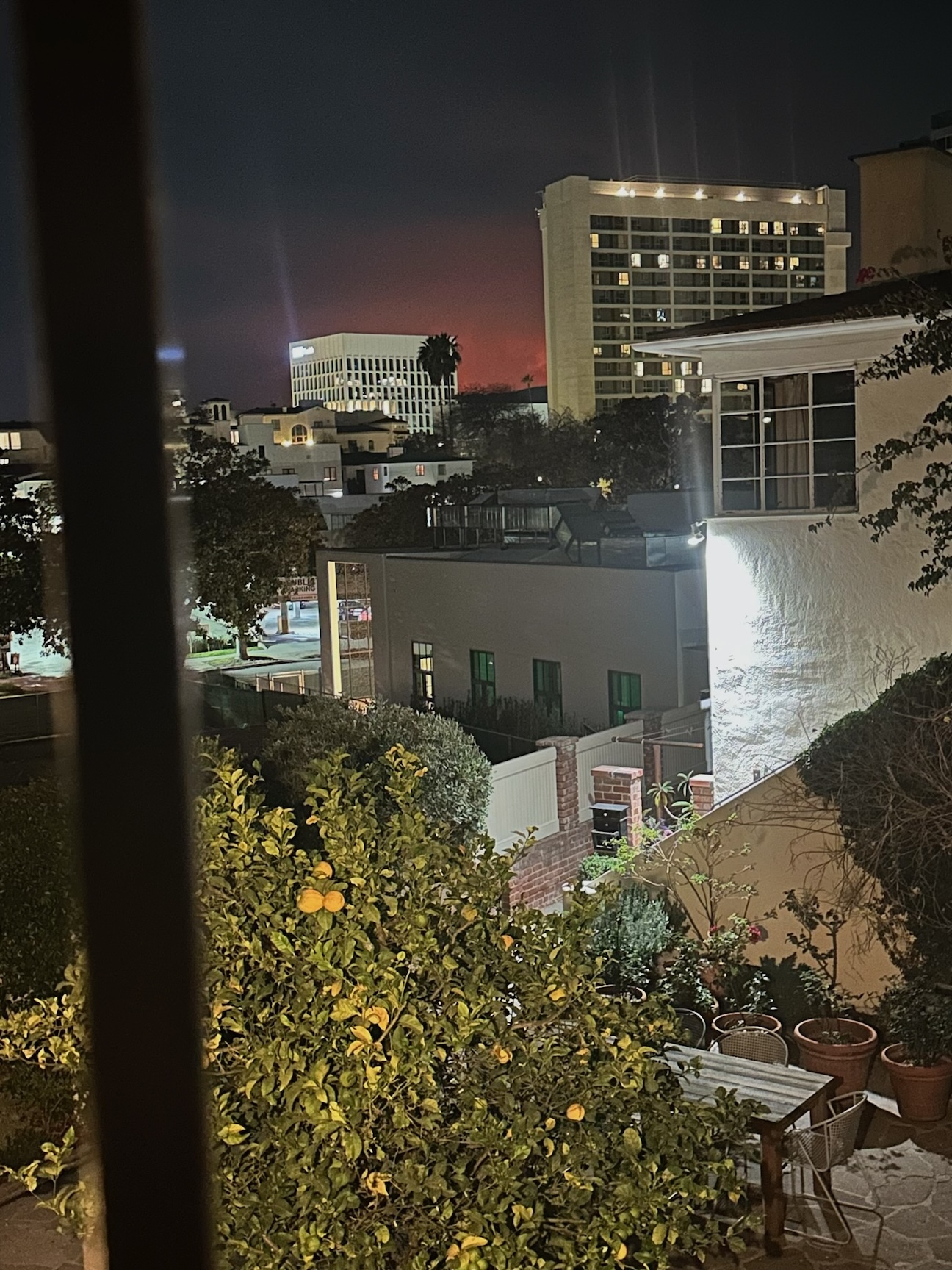 The view from our back window last Friday night - not as bad as in 2019, but still concerning
The view from our back window last Friday night - not as bad as in 2019, but still concerning
In theory, yes. But if Bel-Air caught fire the way the Palisades and Altadena had done earlier in the week, nothing was going to stop UCLA burning.
Since that night we have been in a holding pattern, with the fire department slowly trying to get a handle on these enormous fires raging in the heart of the city. (Calling them wildfires is really a misnomer at this point, beyond describing their unpredictable behaviour - they are actually city fires). But as I pen this on Tuesday evening the high winds are returning and once more all bets are off. All it takes is a spark in Bel-Air, which hasn’t burned since 1971, and where I live gets very dangerous indeed.
And I, like many Angelenos, know this danger well. Within several months of moving to Los Angeles in 1993 I got caught down on Zuma Beach during the massive Malibu/Old Topanga fire that burned all the way from the 101 in the Valley down to the water. I was shooting a film and we were trying to keep on schedule. There was so much smoke in the air that it was like being in an anechoic chamber - you did not hear your voice outside your head. The air was dark and heavy with smoke - only a narrow strip of blue on the horizon - and the smoke had created so much downward pressure that one of the most turbulent shorelines in the LA area was as flat as a mill pond. There was also a big Hollywood production filming on the beach, and the firemen and police were determined to evacuate the few of us remaining because, as they told us, the fire was burning its way to the ocean.
So there we were - a caravan of about ten cars - bookended by fire engines, the last to be evacuated out of the area, driving from PCH heading inland along Kanan Dume Road. As we drove the flames marched down the steep hills towards us on either side, often as close as 100 yards.
In 2008 I was heading up the dreaded 405 through the Sepulveda Pass to the Skirball Center for the first night of a live radio theater production I was in charge of. But as I neared the Getty Center on the hill I could see a wildfire had just broken out in its grounds and I was heading right into it with no exit for quite a few miles. It was raging up to the edge of the freeway. I looked in my mirror. All I could see was a phalanx of flashing lights and fire engines filling all six lanes, seemingly in hot pursuit of yours truly!
As I approached my exit the fire was everywhere so I headed straight to my destination, the Skirball, a massive modern concrete structure. There I, my engineer, the director, the actors, and the audience members who had come early for a relaxing dinner (!) took shelter in the theater for hours as the air got heavy with acrid smoke. The fire department said we could not leave until they had the flames somewhat under control…
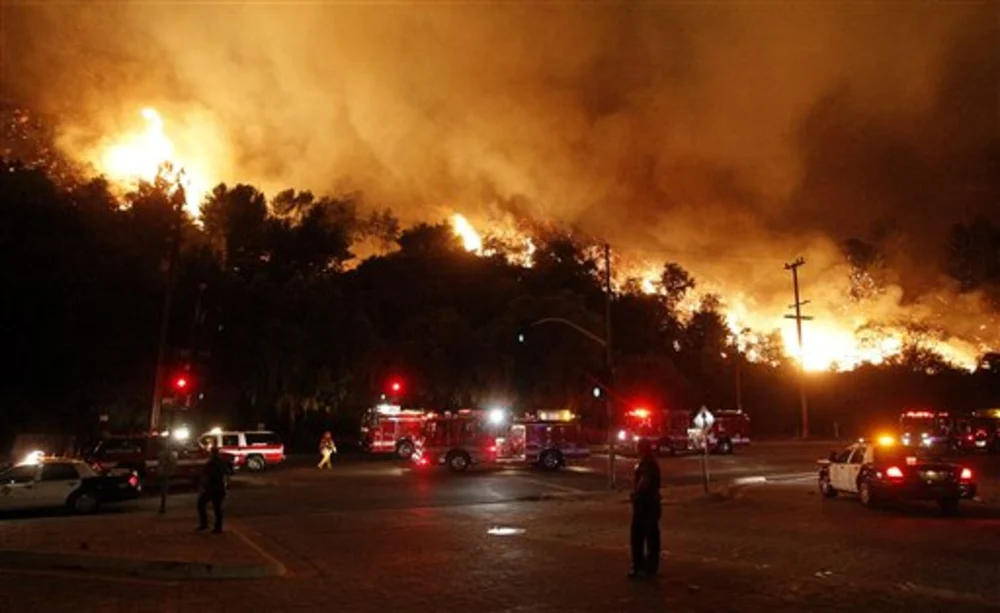 The Getty Fire, 2008
The Getty Fire, 2008
And then there was the Northridge earthquake of 1994. That was fun!
LA: the City of Angels - and demons…
Getting back to last Friday night…
What my texts did not describe was that - once we had our bags packed and the essentials in the car - I had a change of heart. I now had some time, I thought. Maybe 15 minutes. I was going to pick out some records to take with me. But which ones?
Which records from a lifetime of collecting would I - or you - take, given 15 minutes to choose, and limited space in which to pack them?
In the context of everything that has happened in this city since Tuesday, this is almost an obscene question to contemplate. People have lost literally everything: their homes, the material memories of their lives.
I, at least, had the luxury to make the choice, even if the choice was only about things. Prior to this moment when I decided I did indeed have the time to make the choice of which records to take, I had fully decided to leave them all. Let them all burn, along with everything else. All the other things which I have carried with me from my childhood to now: my books, my piano, my things.
It sounds almost tawdry. My things. What are these things compared to a home, to a life, or the lives or your family, friends and neighbours?
No. Let all the things that were left burn.
And I had been comfortable with the decision.
Until I realized I could maybe spare 15 minutes to rescue something. And it was going to be some records. Some of the music of my life, the records I had been collecting since I was 10 (and carting across continents!) Unlike so many during this conflagration, I would have the luxury to choose something I loved to take with me. A real privilege, and one I felt guilty about then and now.
Why should I be so lucky when so many weren’t?
It was an interesting 15 minutes, and one I now feel is worth writing about - even as the fire threat more than lingers.
For those of you who think this is frivolous and offensive within the context of this ongoing tragedy I apologize. But I am a writer, and the experience of making these selections in such a short time was edifying to me - and maybe it will be of interest to you. When I pitched this idea to our editor he also felt it would be interesting. (To be frank, as everyone here strives to think about anything other than the fires while checking our Watch Duty app constantly, it’s a good distraction - to think and write about music. I am catching up on my reviews...)
This process of selecting which records to save from a lifetime of collecting - using reasons practical, personal and financial - also prompted some deeper reflections, which I will get to at the end of Part 2.
Within the limitations of remembering what records I wanted to save and being physically able to actually find them (my current organization and shelving resources are somewhat disheveled, to say the least), I was going to have to be completely honest about the criteria for making my choices: about which records mattered to me most in and of themselves; which records contained a financial incentive to save because they would be impossible to replace within any kind of reasonable cost; and which records I really wanted to save but would have to leave behind because they were too bulky.
Would I like my answers and my choices?
Humans are materialistic creatures. Most of us define ourselves in large part by our possessions. But do we really need them?
I needed none of these records, but given a moment to save some of them, I decided these were the ones I would choose to need, for a range of reasons.
Here they are, and here’s why I chose them. In 15 minutes.
THE CLASSICAL PILE
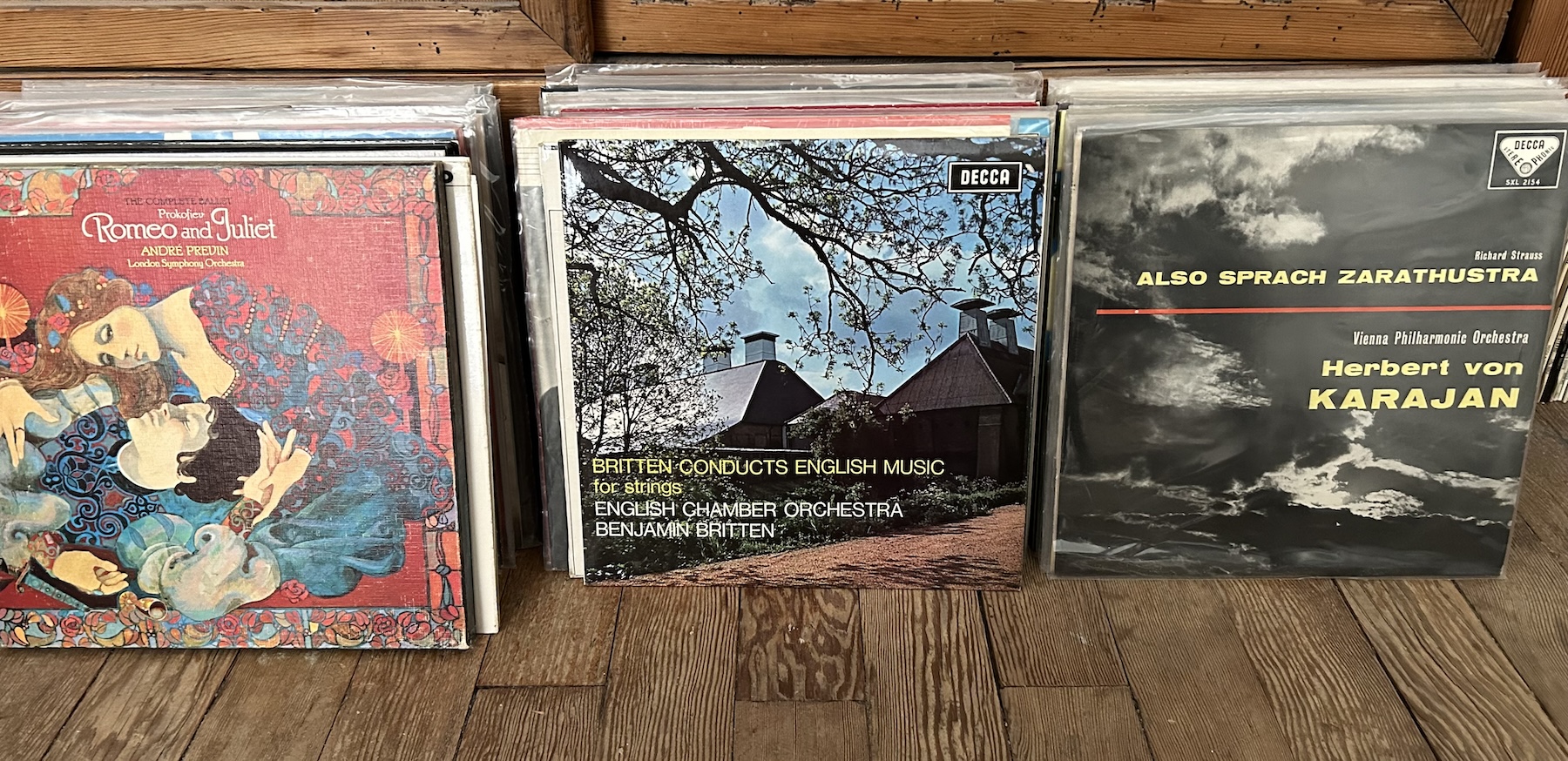
Right off the bat, if I took nothing else, I knew I was going to take these two records. And then I couldn’t find them! My heart raced. I cut my losses and started going through other records. Finally I chanced upon them.
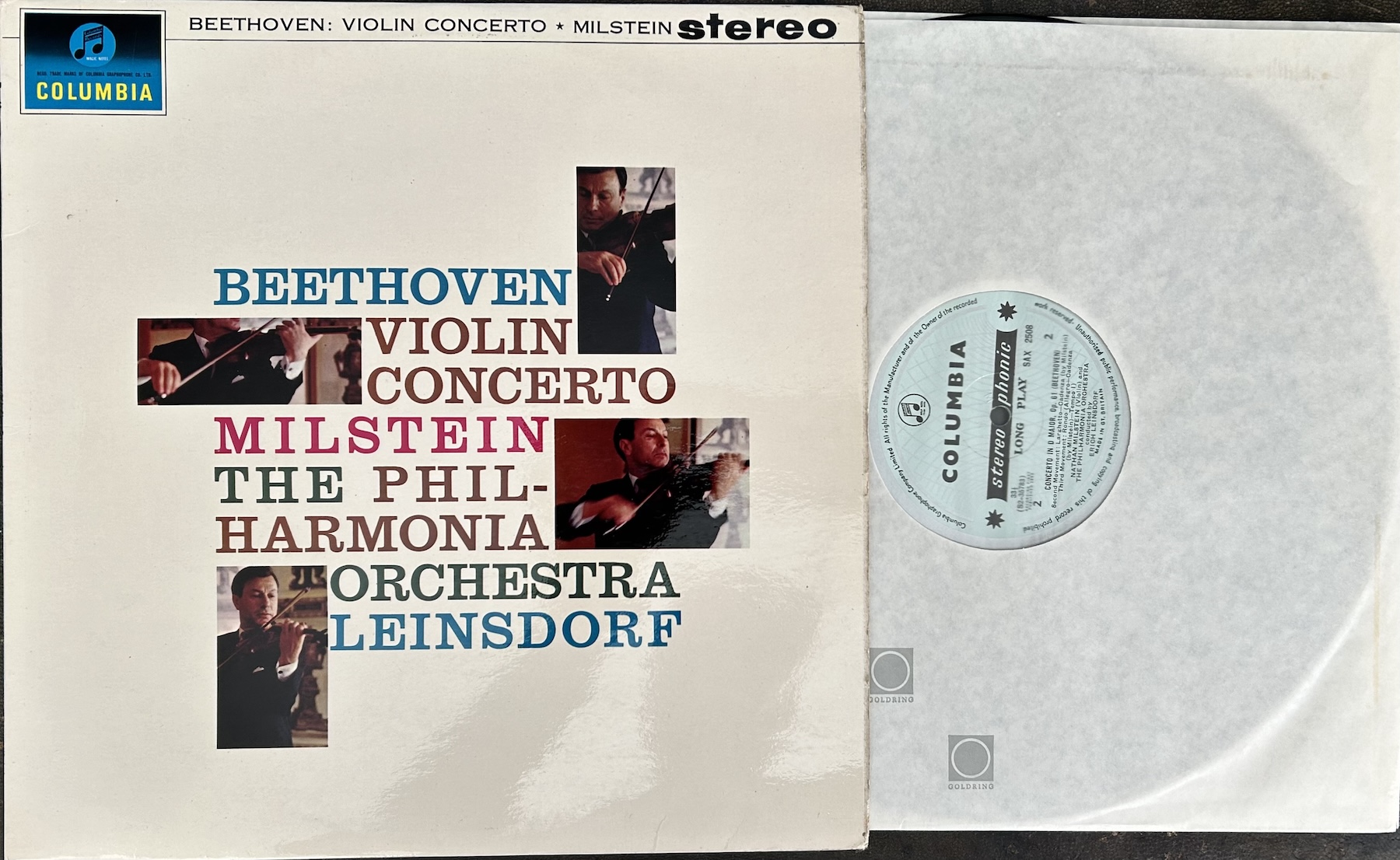
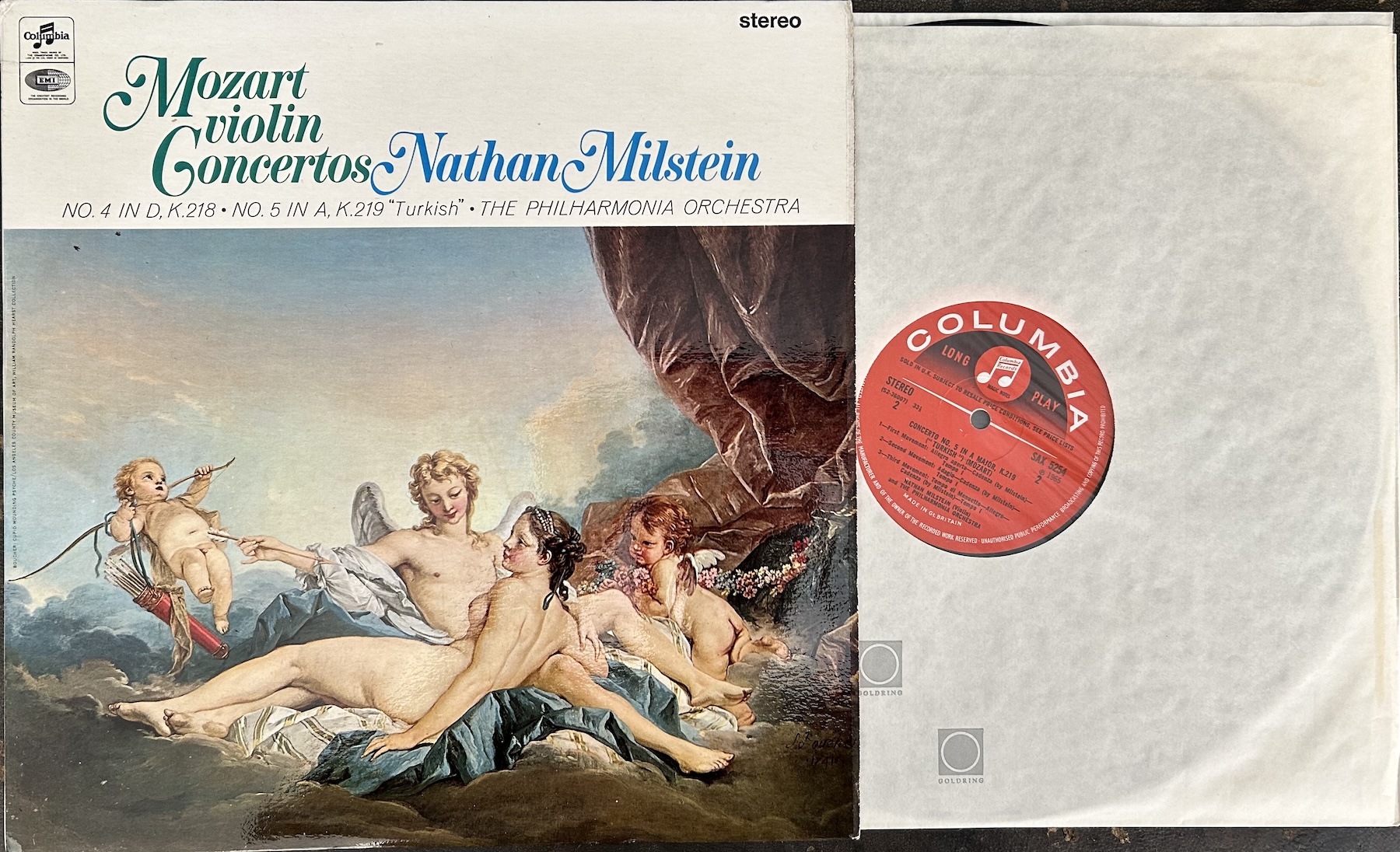
I bought these Columbias back in the 90s, and these are rare early pressings by one of the greatest violinists of all time. He’s certainly my favorite - I’ll listen to him over Jascha Heifetz any day of the week. The performances are sublime, the sound is early EMI/Columbia perfection - warm, rich, bathed in sunlight; more of a mid-hall perspective than Deccas of the same vintage. Classical collectors really treasure these early Columbias and for good reason. I am very, very lucky to have a shelf of them and they are profoundly treasured. But there was no way I could take more than a handful. So I allowed myself a few more, and I started with Otto Klemperer.
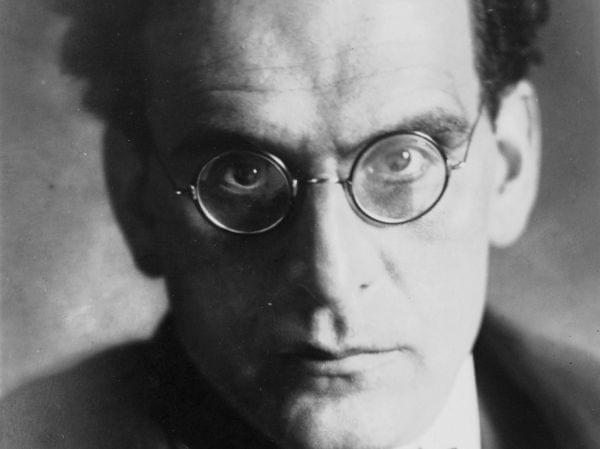 Otto Klemperer
Otto Klemperer
My first exposure to Klemperer was as a kid. He was broadcast conducting a cycle of the Beethoven symphonies on TV. It was ghastly. Old and infirm, his mouth hung open as he beat time from a wheelchair. The music was so slow. I was put off Klemperer for decades - really until I got the audiophile bug in the 90s and started seeking out these early Columbias (along with early Deccas). I quickly discovered Klemperer was one of the most interesting musicians of the 20th Century, had lived in Los Angeles and had helped found the Los Angeles Philharmonic. He was quite the maverick and had worked with all the greats. I picked out several OGs, not necessarily of his core repertoire, but all quintessentially Klemperer performances of weight and authority.
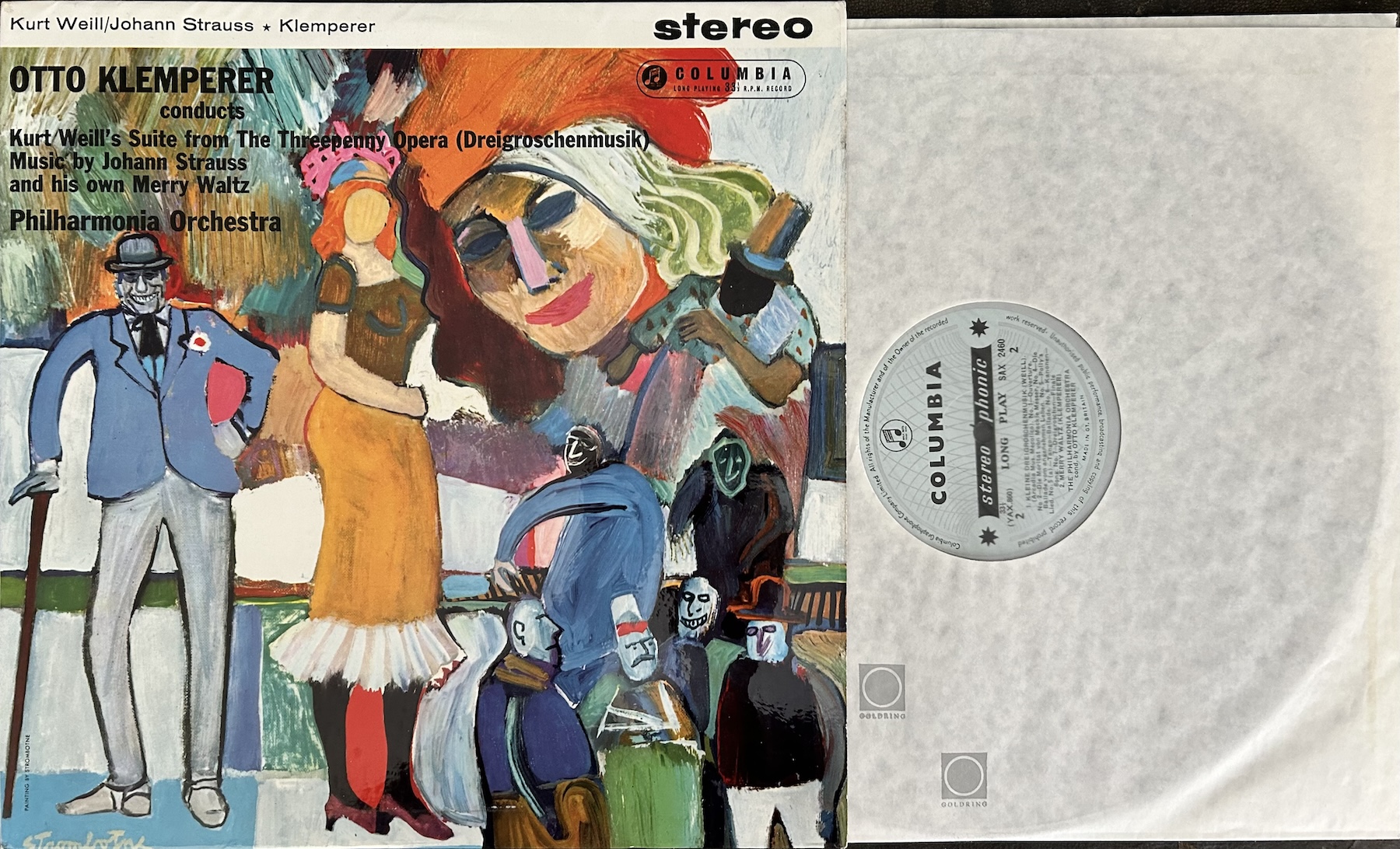
Klemperer championed modern music when he was still in Germany in the 1920s and 30s, and commissioned this suite from The Threepenny Opera from Kurt Weill. This is as authoritative as it gets, and the couplings are so unexpected. No one thinks of Klemperer as a conductor of Johann Strauss, but these are glorious renditions. Plus we get the bonne bouche of his own Merry Waltz.
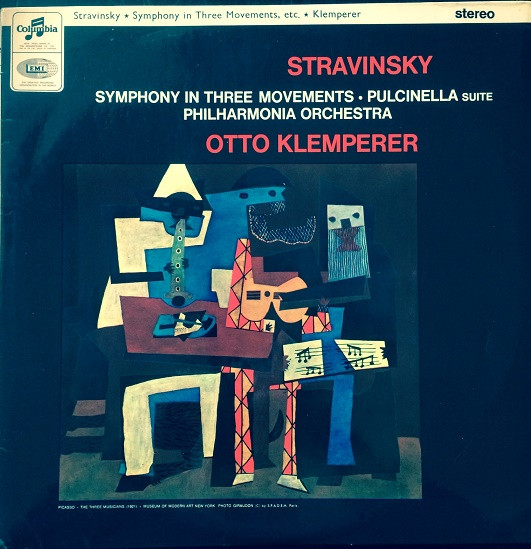
This is a recent acquisition, including two of my favorite Stravinsky works. The Symphony in Three Movements is craggy, edgy, heart-racing - and definitive.
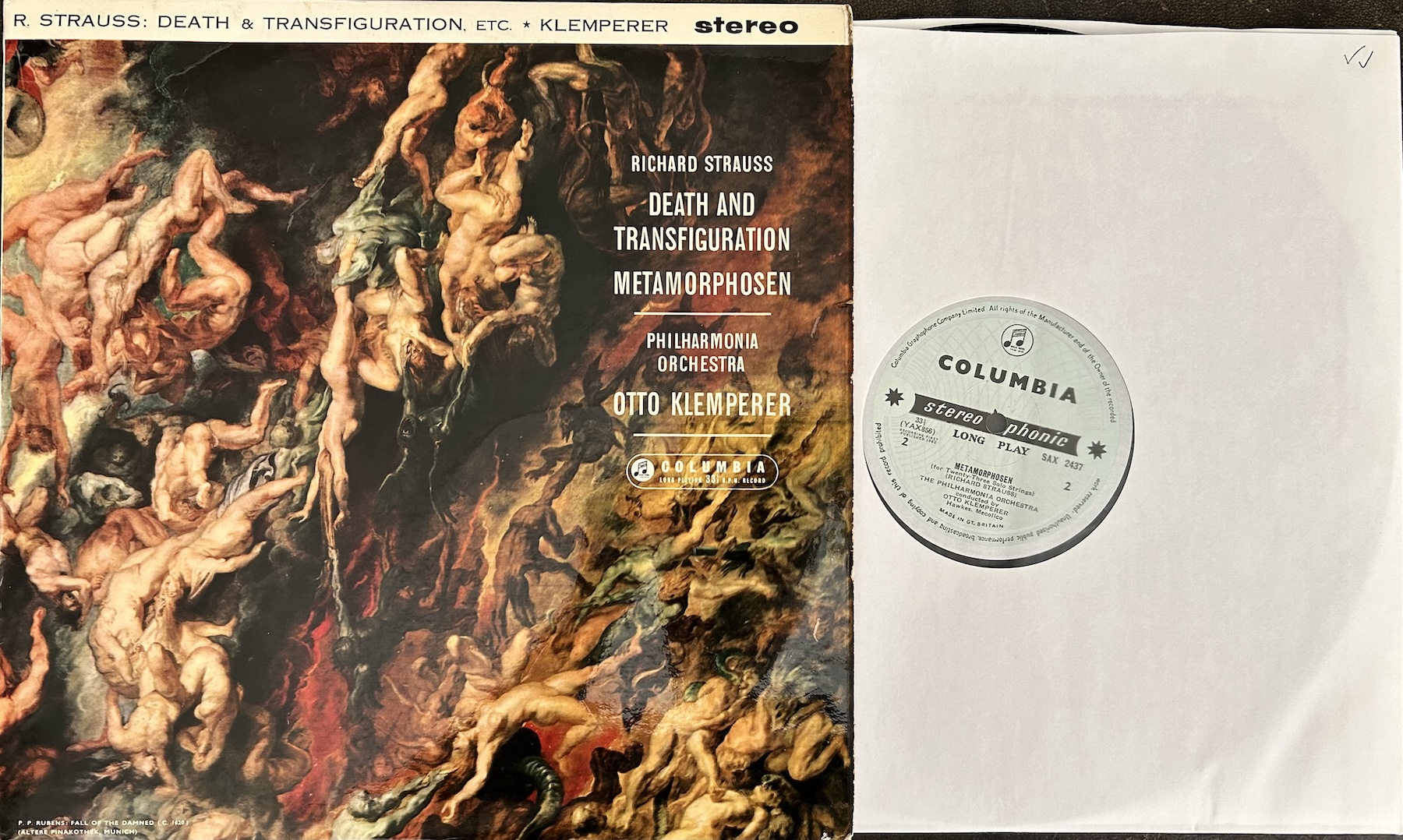
This pairs two of my favorite late Romantic works, again in definitive performances. Death and Transfiguration depicts a man on his death bed: you hear the “beat-beat-beat” of his failing heart, the fear of the great unknown. But in death his life is transfigured, and Strauss fully captures the raptures of the man’s departing soul. Next to Karajan’s rendition, paired with Gundula Janowitz’s equally transcendent Four Last Songs in their Original Source incarnation, this is the finest version on record. (That Karajan record almost went into the car; I held back, thinking I would probably be able to pick up a copy later somewhere along the line). And on the reverse you have the strings-only composition of Metamorphosen - a piece of matchless beauty and comfort. Composed in 1945, it was one of Strauss’s later compositions and it spoke to his reaction to the end of the War:
“The most terrible period of human history is at an end, the twelve year reign of bestiality, ignorance and anti-culture under the greatest criminals, during which Germany's 2,000 years of cultural evolution met its doom”.
It’s one of those works I listen to in trying times, and Klemperer’s recording captures its many facets in quintessential Columbia sound.
Reluctantly I left behind original pressings of Brahms symphonies, Wagner orchestral music and more Richard Strauss…
My other treasured horde of Columbias are a clutch of Giulini OGs. Impossible to choose between them. I took just one, glorious Falla and Ravel.
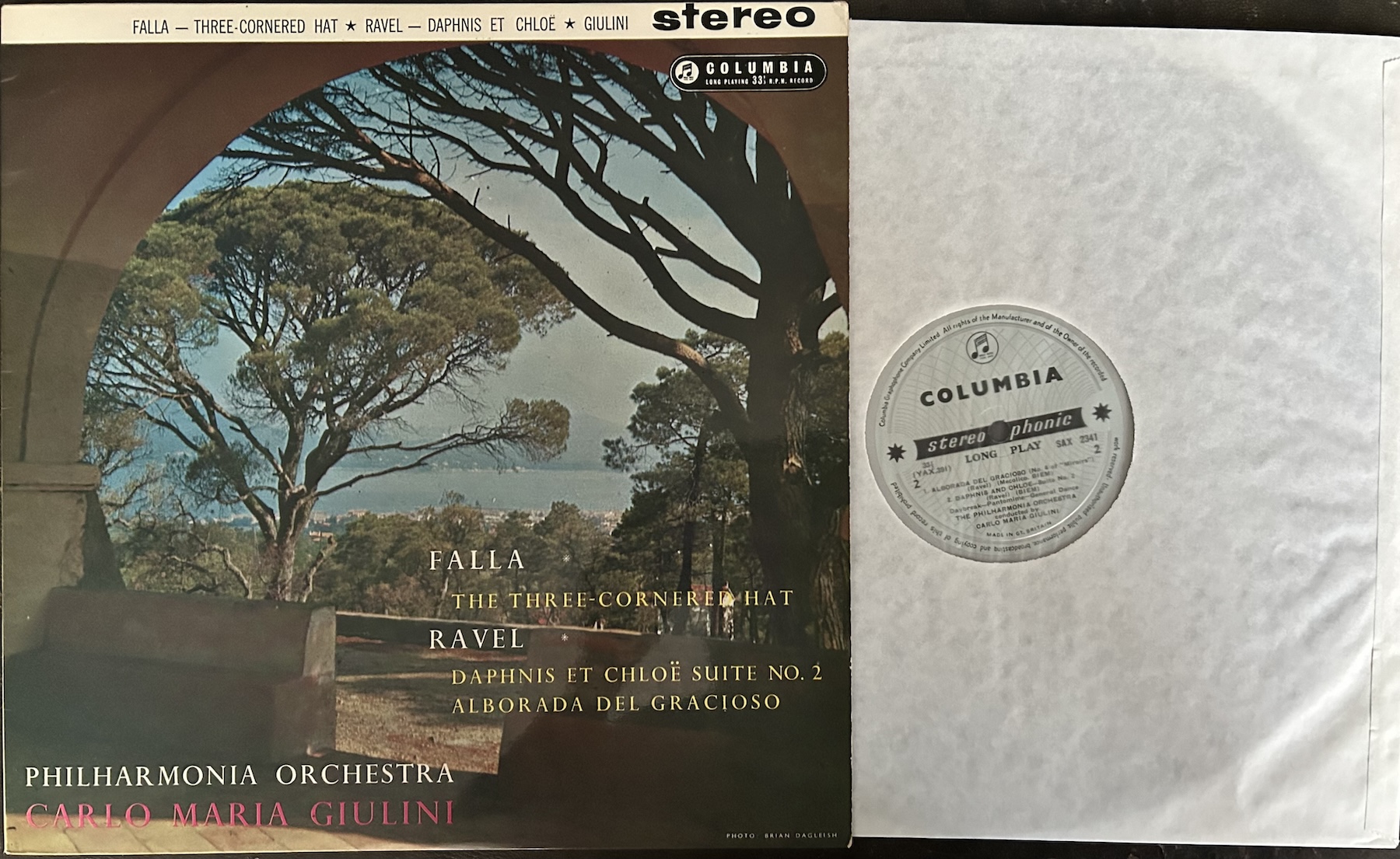
My eye fell on this, and I knew I had to take it. A first pressing, hard to replace at a decent price. And I had been a ‘cellist.
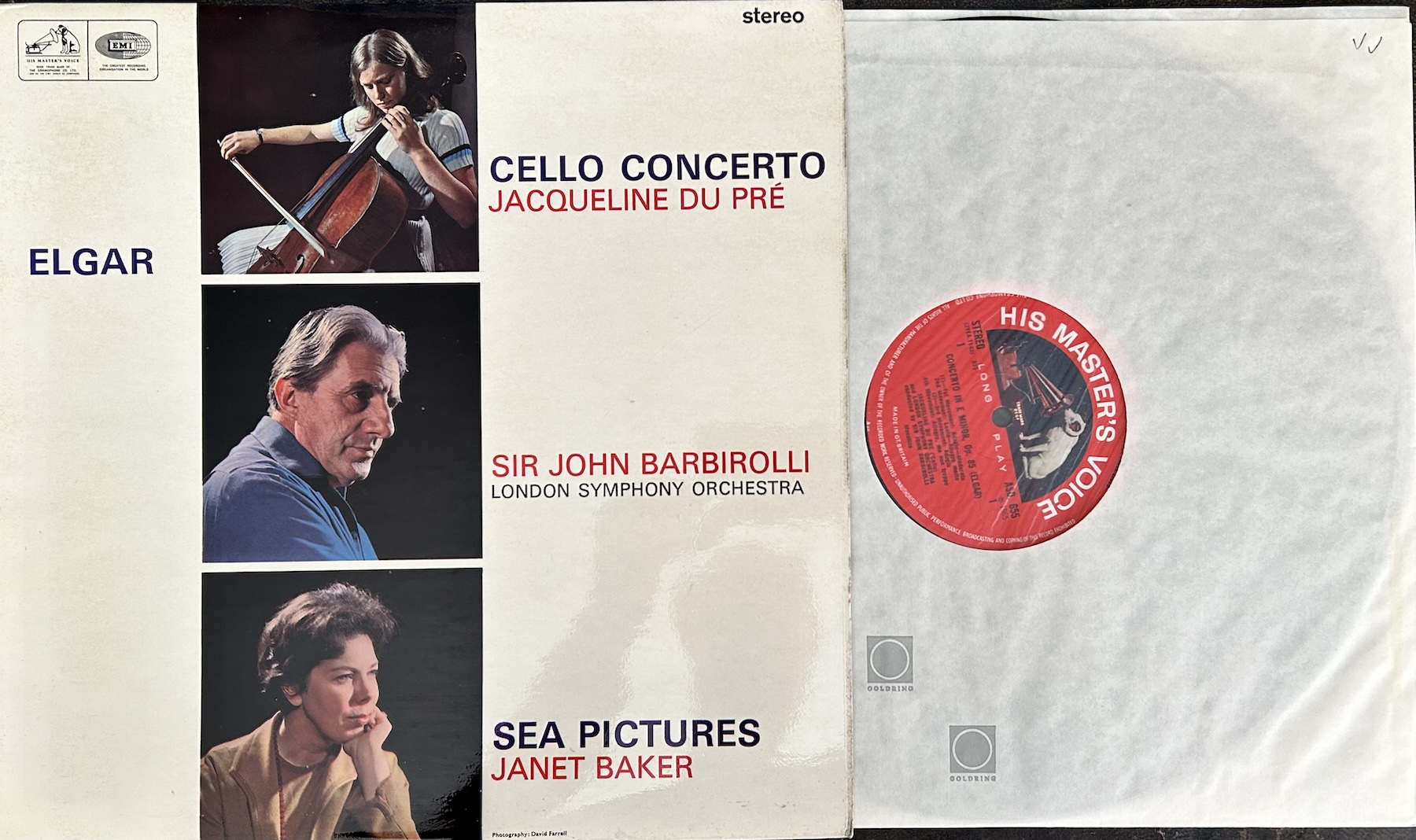
I then moved onto my section full of Britten’s Decca recordings. Without hesitation three of these went onto the pile immediately, all original wide bands in stunning Decca sound. This is all music that has spoken to me since my early teens. The English Music for Strings is one of engiuneer Kenneth Wilkinson’s best-sounding recordings, and the repertoire is a great mix of well and lesser known repertoire.
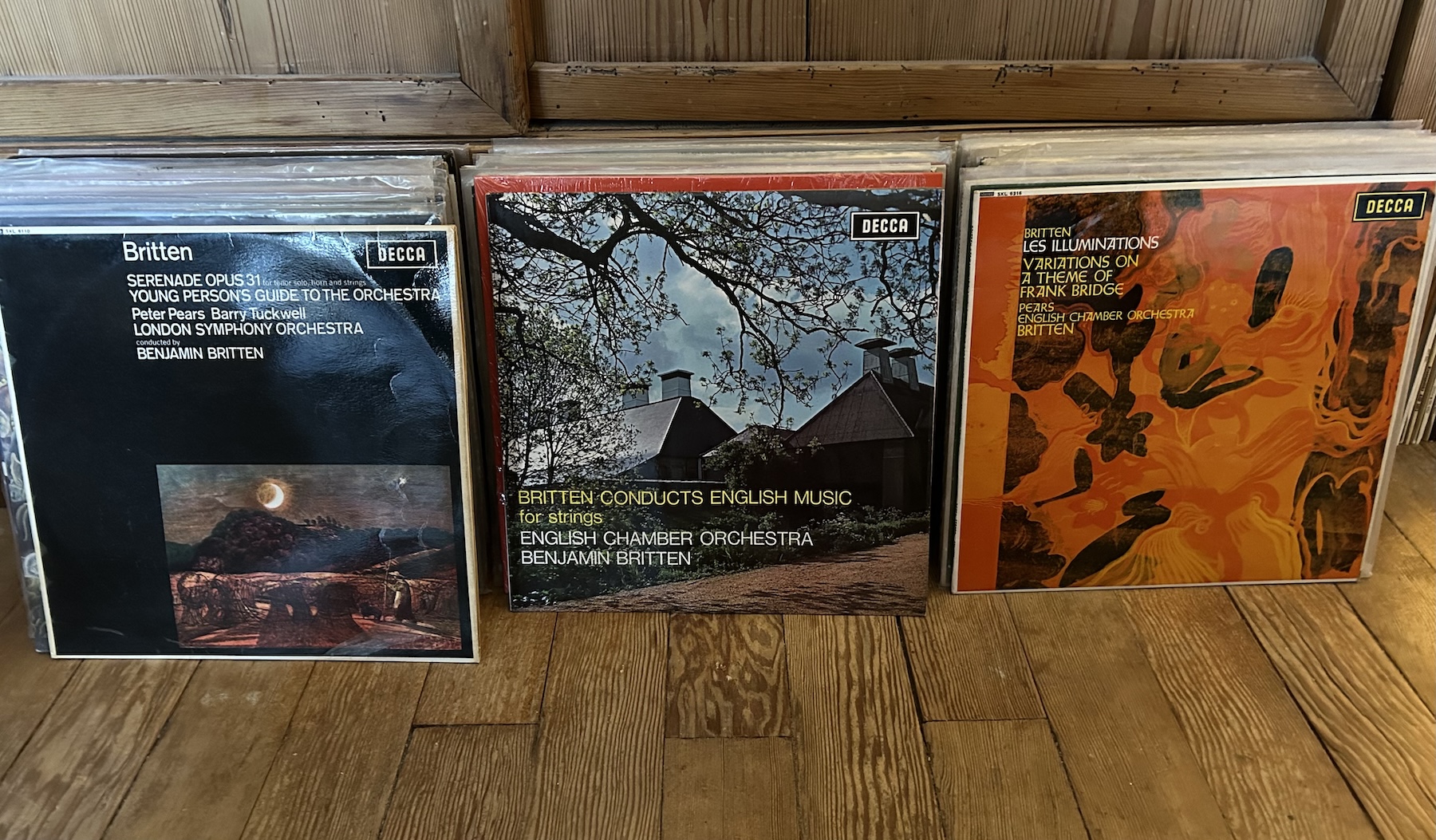
I really wanted to take all my Britten Deccas - of his own music and him conducting others - but I figured I would probably be able to track down replacement copies without spending too much. Not this one though - it goes for big bucks.
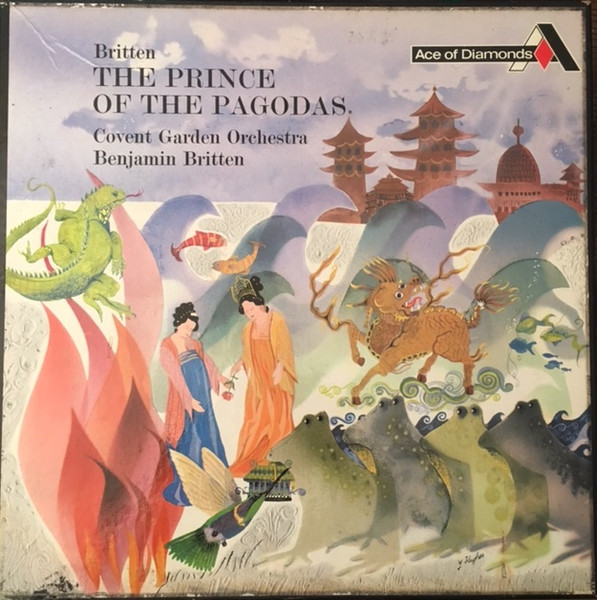
This is Britten’s sole ballet, music that is still relatively unknown, but this is a genuine audiophile classic which I bought in my teens long before it was acknowledged as such. Britten wrote the ballet after a trip to Bali, where he was utterly enchanted by gamelan music - so he integrated those sonorities into his score. This is a set I have come to listen to more and more.
Decca is my favorite classical label, and I was facing a real challenge in choosing what to take from amongst my original pressings and reissues.
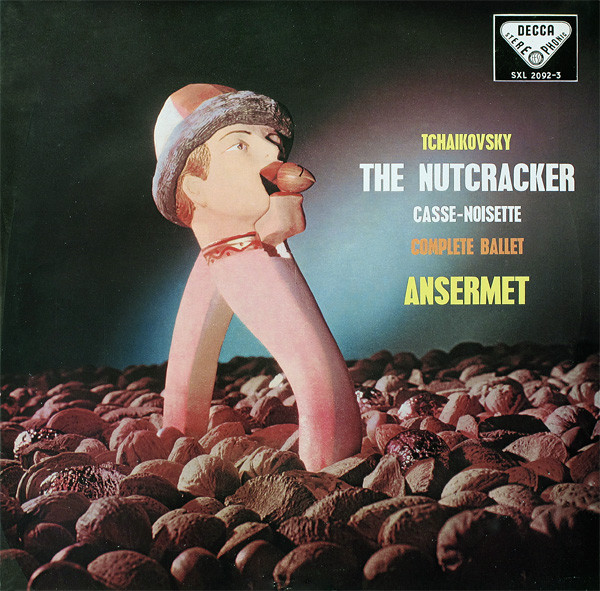
But this one had to come with me - an OG wide-band of music that I listen to constantly. I have many recordings of The Nutcracker, but this is the one I turn to most often. It is sprinkled with fairy dust, magical from beginning to end as so many Ansermet records are. And besides, this is the set I would put on most often when my daughter was growing up - she loves this music, and danced to it thru her many years of ballet school.
I gazed longingly at my many Ansermet OGs and reissues, stymied by the choices before me. The clock was ticking. Those of you who are hardcore classical collectors may be surprised at what I grabbed: Ernest Ansermet’s records of Haydn symphonies.
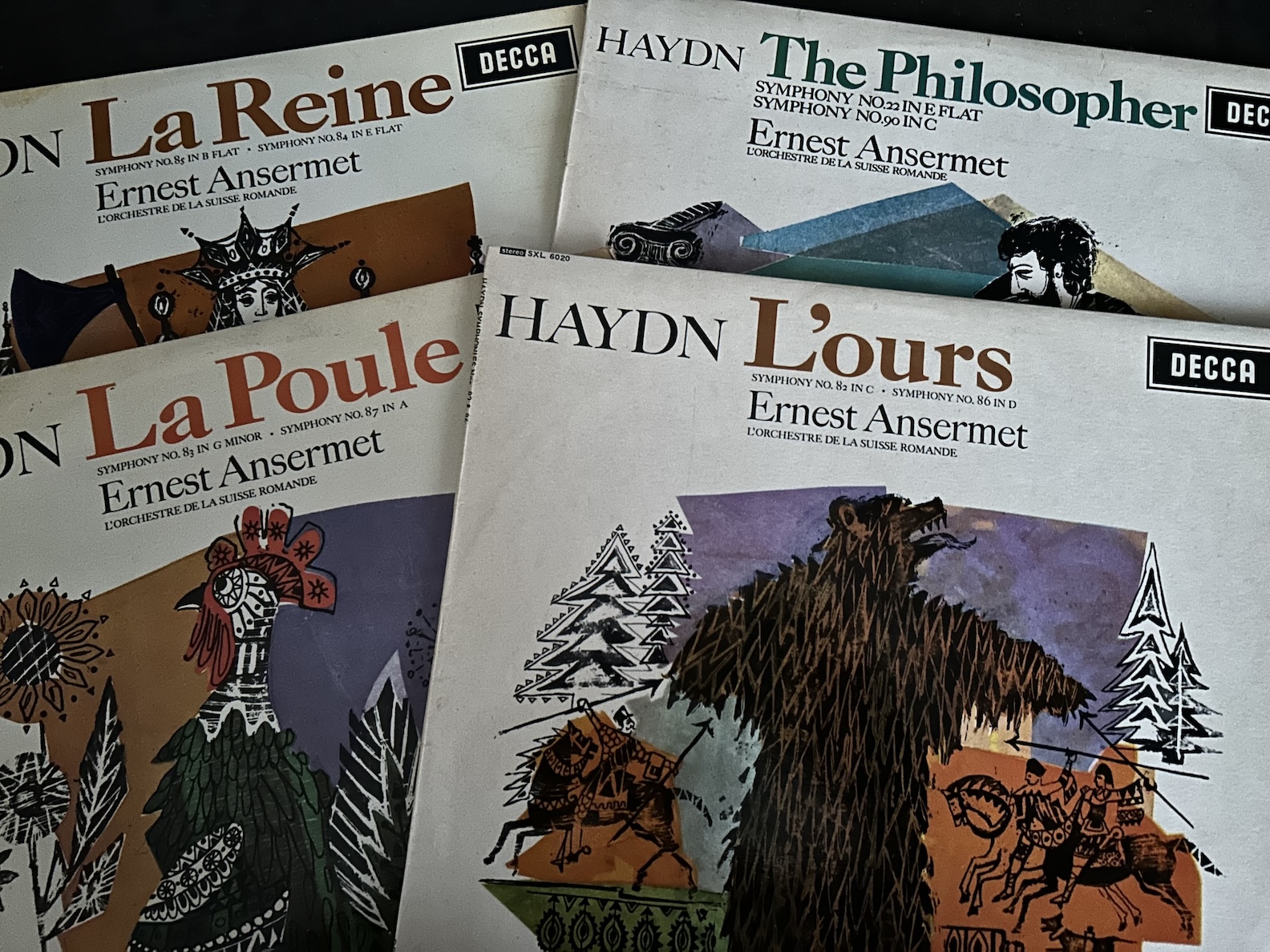
I bought these back in the 90s, almost on a whim. I was filling out my collection of Ansermet OGs via a UK dealer at the time and he highly recommended them. I didn’t even know Ansermet had ever recorded this repertoire. They are not critically acclaimed recordings by any means, but I absolutely love them. Fantastic sound and hard to find. I grabbed ‘em, leaving behind Ravel, Debussy, Stravinsky. Madness, I know…
My eye fell on another longtime Decca favorite, in a wide-band pressing. This is one of the great Italian conductor’s finest records, and I play this one often.
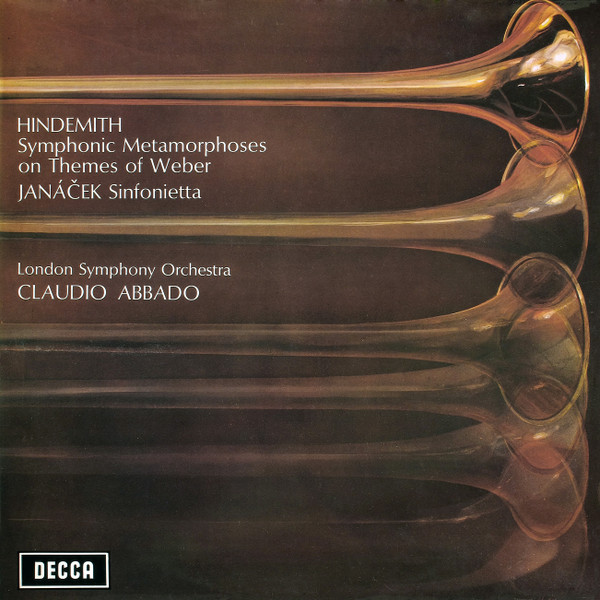
That brought me to my clutch of all the Zubin Mehta/LAPO Deccas in their earliest incarnations. No hesitation here….
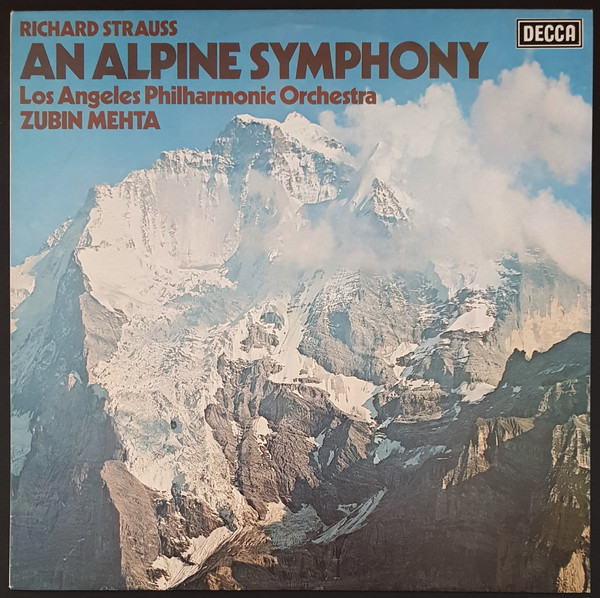
Still my favorite version of this work.
This led me to my Karajan OG Deccas. Impossible choices. Again I had to restrict myself and I opted for the recording which Kubrick used in 2001: A Space Odyssey. It’s a John Culshaw Vienna production, suffused with the sonics of the Decca recording team working in the Sofiensaal.
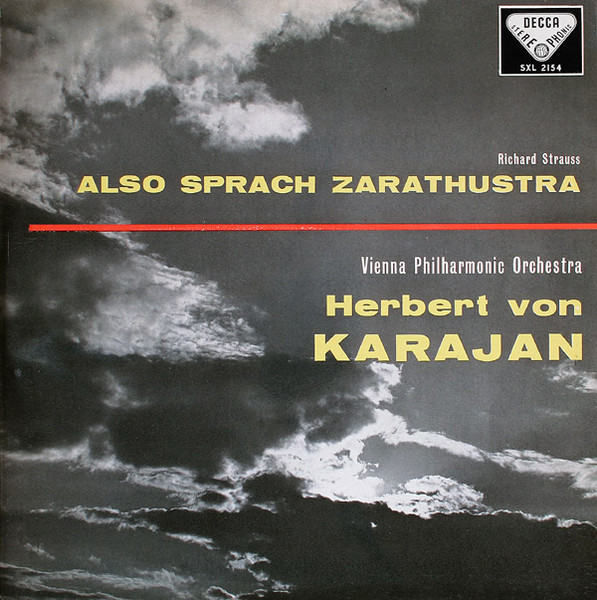
…and this stunning recording of Dvorak’s lesser-known 8th. This is hands-down my favorite recording of this symphony, and is in many ways one of Karajan’s greatest of any era, in superb sound that wraps you in a golden blanket of Czech and Viennese warmth and ebullience.
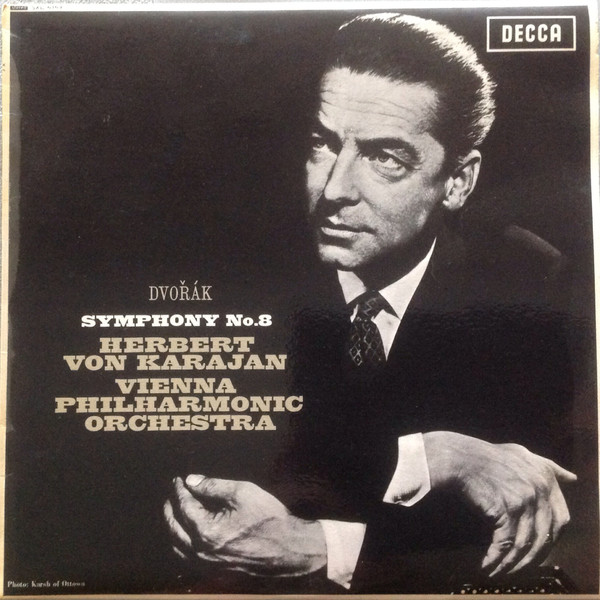
There was one more Karajan Decca that I almost took, but I figured I would pick up a copy somehow in the future: the Speaker’s Corner reissue of Puccini’s La Boheme, one of the greatest operatic sets of all time, with Luciano Pavarotti and Mirella Freni in their primes, a Decca audiophile widescreen extravaganza. The SC reissue bests my OG.
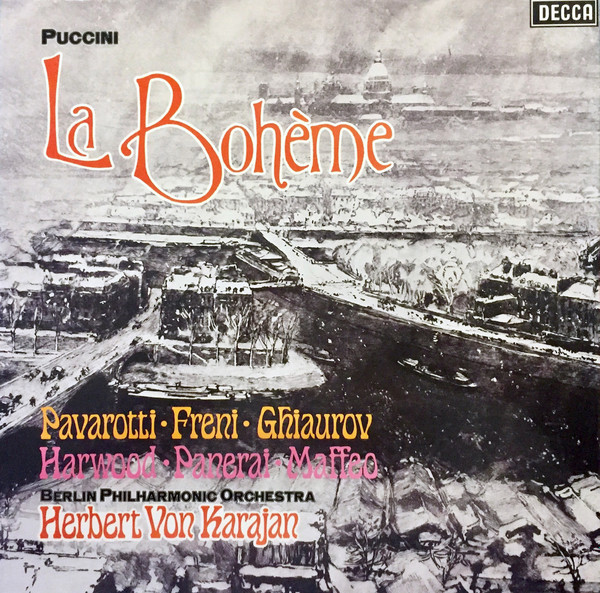
A few more OG Deccas leapt into my hands: a magical album of Pierre Monteux doing Ravel and Debussy, and two priceless wide-bands that collectors drool over. I had to take these.
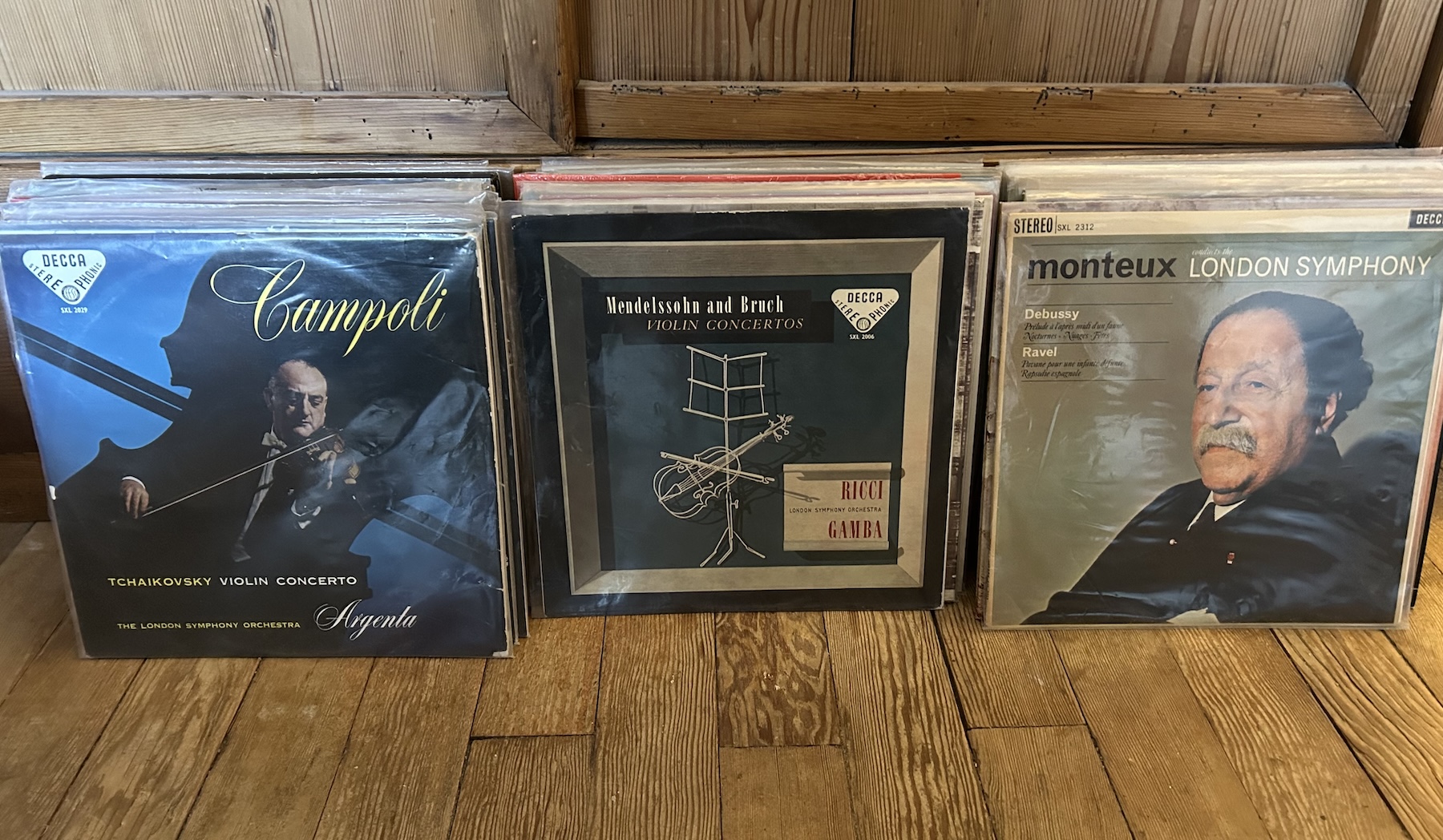
There was one Argo record I wanted to take, but I couldn’t find it: this gorgeous recording of Michael Tippett’s String Music by Neville Marriner. Music close to my heart, another genuine audiophile treasure that few know of. I’d have to find it after-the-fact…
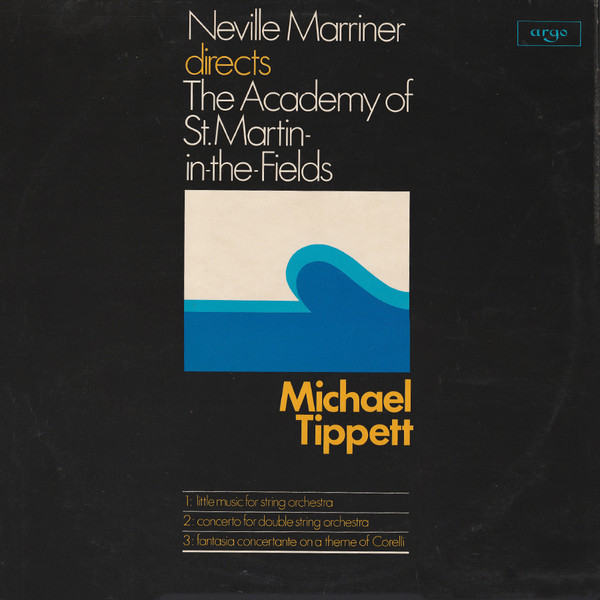
It was time to move onto the next shelf of EMI pressings, and decided I had to take another classic of English string music, in an early semi-circle pressing. I would surrender my Alto reissue to the flames.
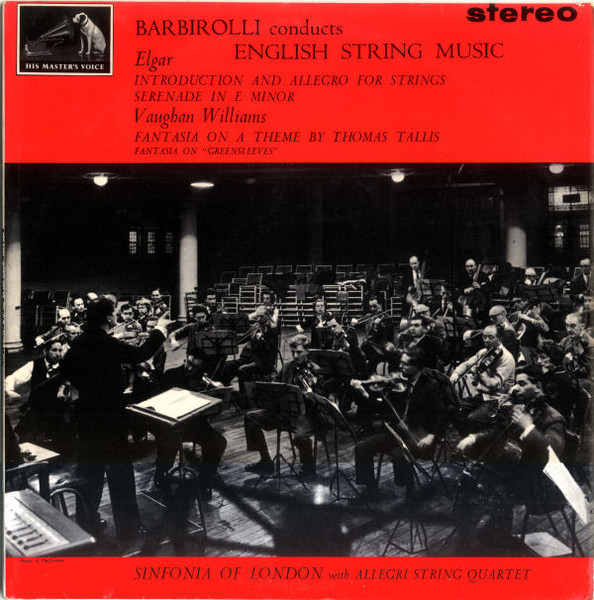
Two records were no brainers and have been favorites since I bought them when they first came out in the 1970s.
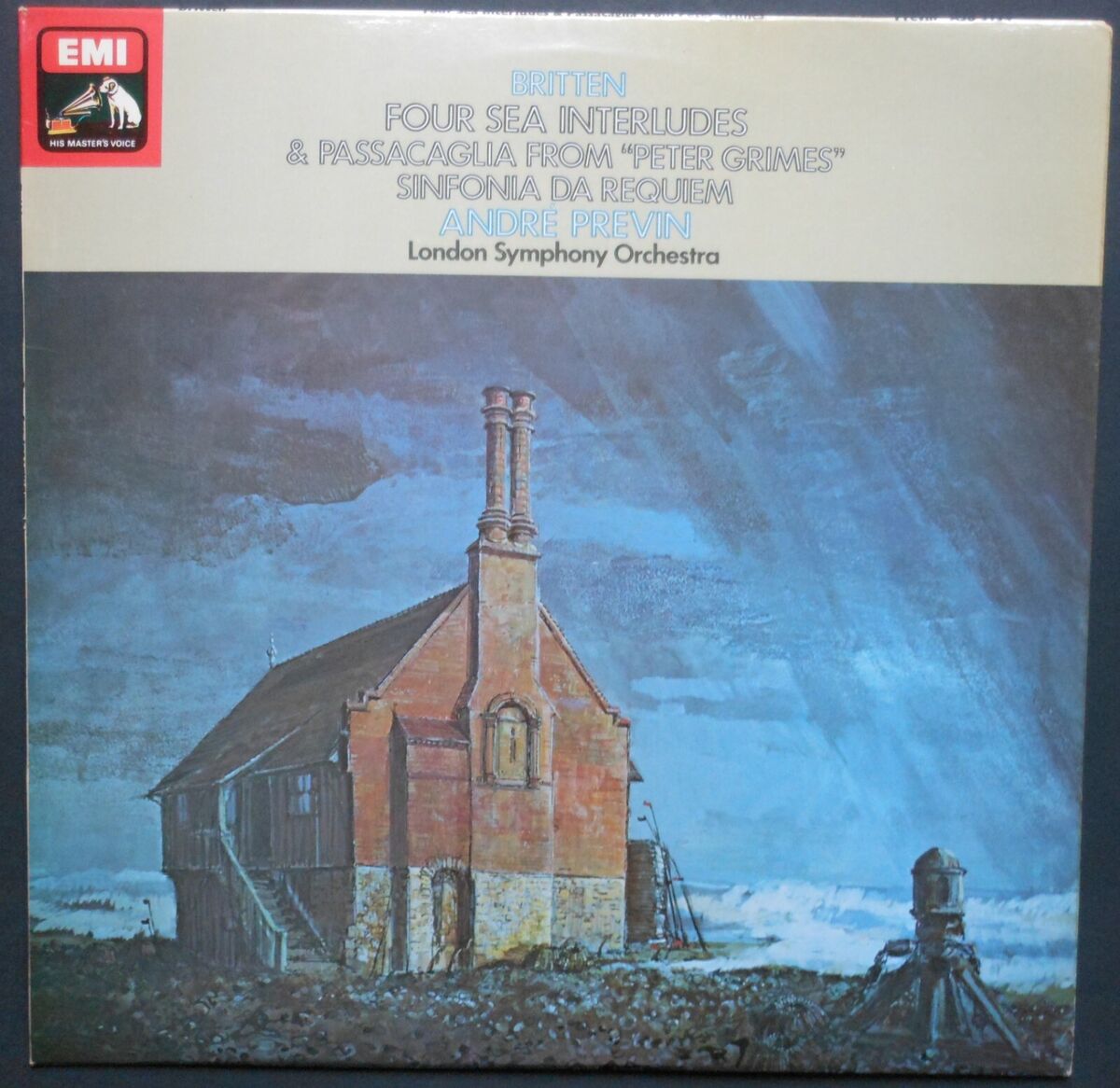
More Britten, and one of André Previn’s very best, which should be in every classical collection. The sound on this is top tier, and the performances definitive, besting even the composer’s own.
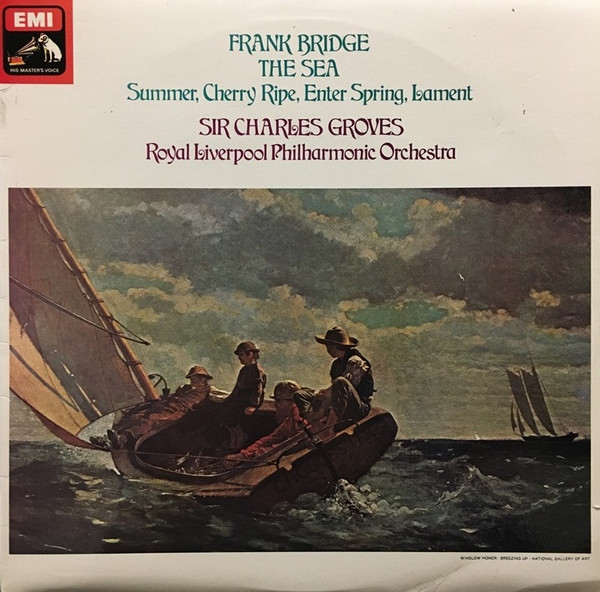
Charles Groves is another conductor whose records I have assiduously collected, and this is music by Britten’s composition teacher, Frank Bridge. These are works that deserve to be far better known, again in demonstration sound: a completely different approach to painting nature in music, although you can detect the thread that runs from tutor to pupil. Audiophile classical collectors looking to explore the British repertoire need look no further than all of Charles Groves’s EMI recordings.
So what on earth was I going to do about my tranche of Previn EMI records, all of them never less than excellent, many of them benchmarks? No time to choose, and I determined I could pick them up again on the used market. Except I had to take this, my favorite recording of my favorite ballet music after The Nutcracker…
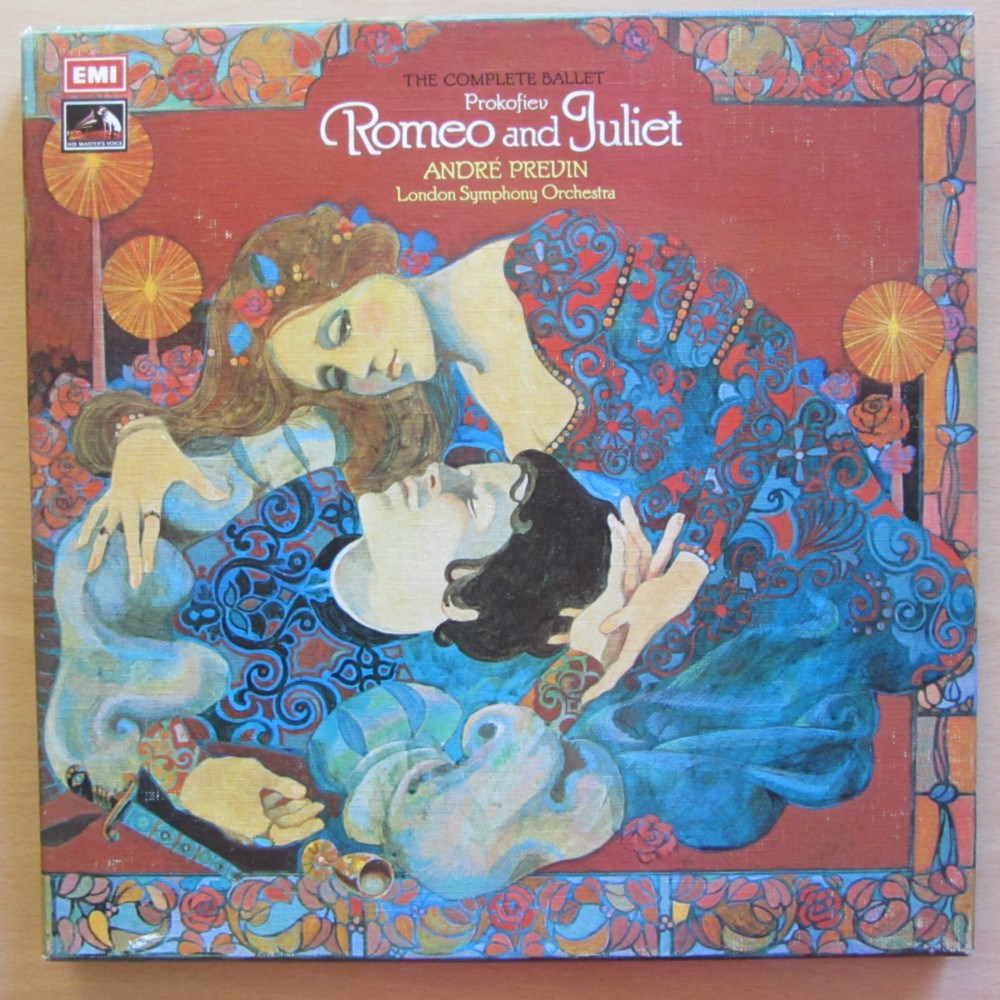
It’s a more relaxed interpretation than Lorin Maazel’s rightly celebrated version on Decca with the Cleveland Orchestra, but Previn digs deeper and packs a bigger emotional punch. This is a desert island record for me, bought when I was in High School. This is music that anyone can love, and I urge any classical lover who does not know this work to try it out, in either the Previn or Maazel versions.
Then I had to also take my recently acquired copy of Alto’s celebrated reissue of Previn’s unequalled recording of this compelling symphonic testimony to 20th century horrors.
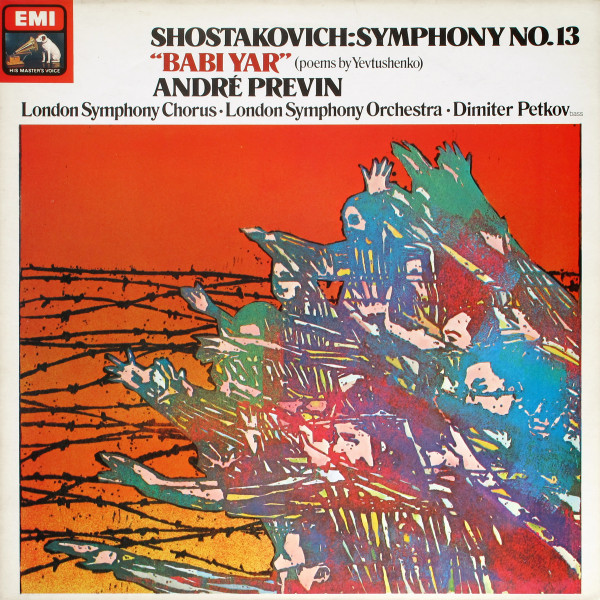
I had waited years to pick up a reasonably priced copy, and I wasn’t about to surrender it to the fires.
Another long-treasured EMI of modern ‘cello music sprang into view. I had no idea how easy it would be to find a used copy so I grabbed it.
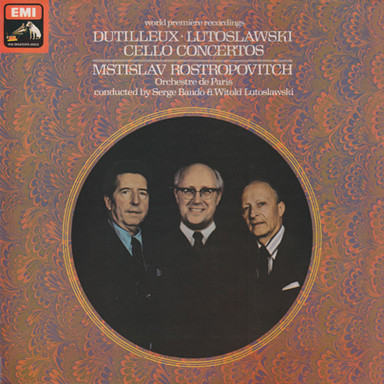
This is a stunning recording of two completely different kinds of works, performed by the legendary ‘cellist who commissioned them. The Dutilleux is all post-Romantic, neo-Debussy/Ravel dreaminess, easily accessible. The Lutoslawski is spikey, angular modernism, but with an anguished heart that spills out between all the modernist thrills and spills. If you are looking for something different this is a must-listen.
Regrettably I passed over my extensive collection of Adrian Boult EMIs, knowing I could readily find them later on the used market.
Finally I dived into my shelves of audiophile classical reissues. I knew I had to take these Classic Records’ AAA versions of records I play often. I wish Chad at Analogue Productions would reissue these from the Classic Records plates he has in his vault.
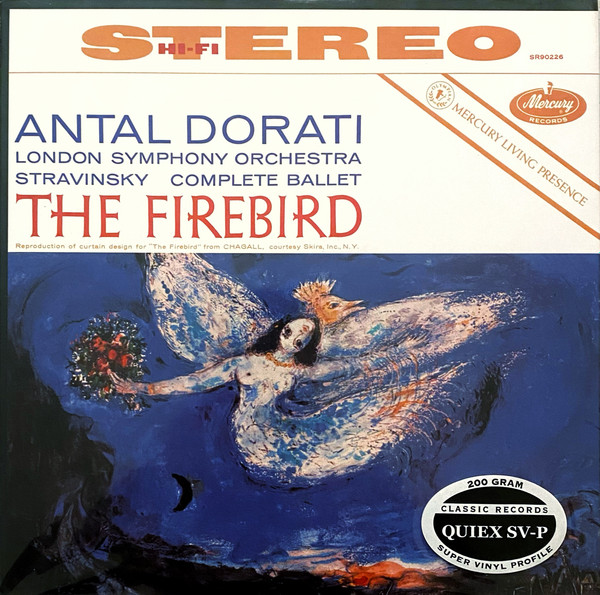
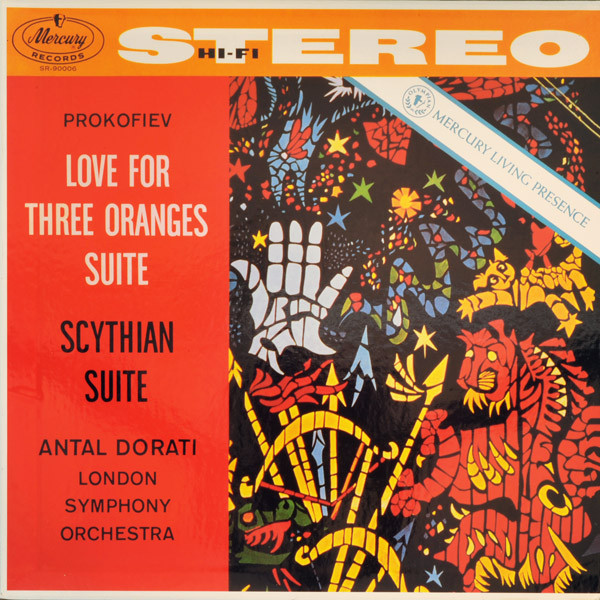
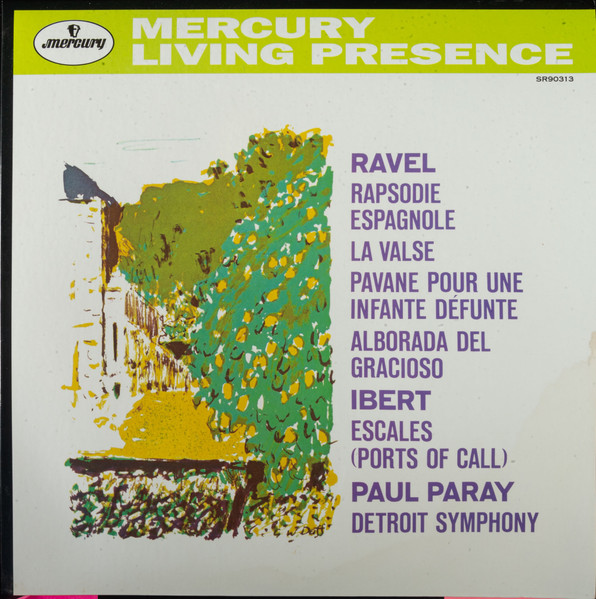
Reluctantly I left my 45rpm pressings of all of these behind.
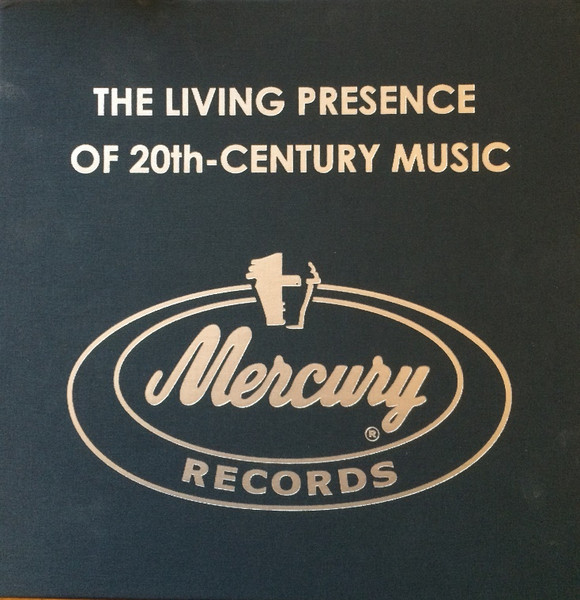
But then I spotted this fantastic Speaker's Corner box gathering together three of Antal Dorati's pioneering 20th century albums for Mercury. This one had to come with me...
A long shelf of Classic and Analogue Productions reissues of the Living Stereo catalogue stretched out before me. Impossible choices, but Clair de Lune is one of my favorite records, and is now getting hard to find on the used market.
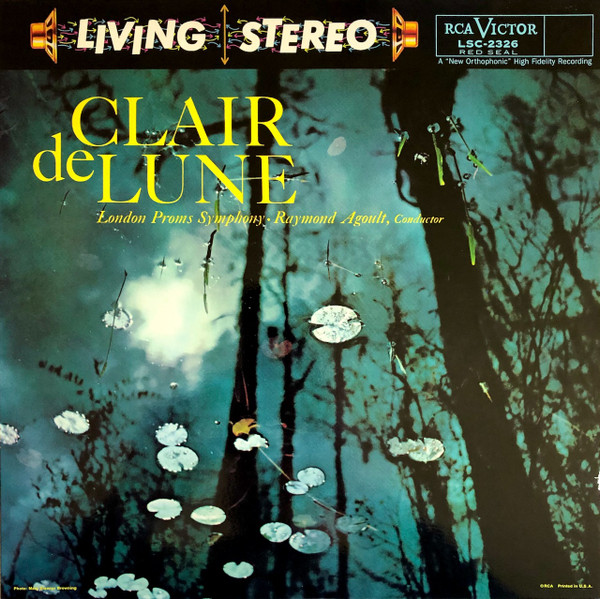
Isn’t it interesting that for all my knowledge and love of a huge range of classical music, this record of classical bon-bons should remain so high in my affections.
I also had to take this Monteux classic.
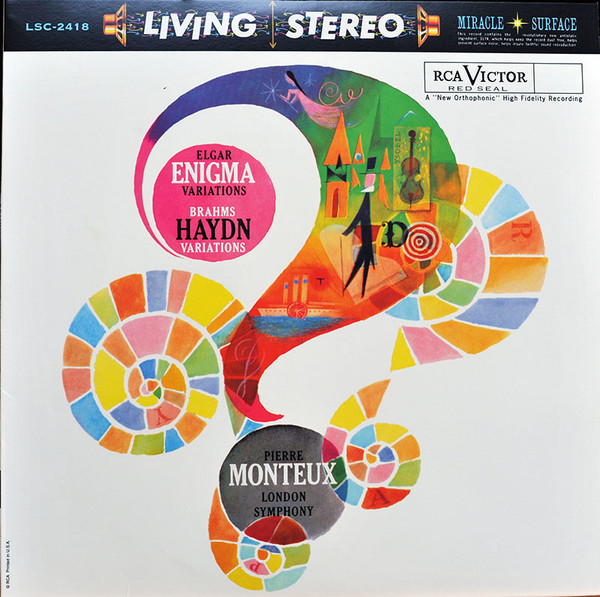
The Brahms St. Antoni Variations is my favorite work by that composer, and this recording is the non-pareil, as is the Elgar. The pile was getting heavy as I scanned all these Living Stereo treasures, above all Fritz Reiner’s Bartok albums: Music for Strings, Percussion and Celeste, and the Concerto for Orchestra. These are works (and records) I can listen to over and over. Taking a big gulp I decided to trust to the hope that they were still in print - and if not, the vicissitudes of Discogs. I knew that the indispensable Ansermet Royal Ballet set was still available in its Analogue Productions incarnation, and with a heavy heart I abandoned this and both the Classic Records 2LP/dowel set, and the 45rpm set.
Another essential Analogue Productions reissue of Milstein Masterpieces likewise was left behind - it’s still in-print for re-purchase, just.
And now came a major dilemma: Alto’s deluxe reissue of Ataulfa Argenta’s early Spanish Decca records, almost impossible to find used at a decent price - I had bought it when it came out. Trouble was, it is a very bulky set.
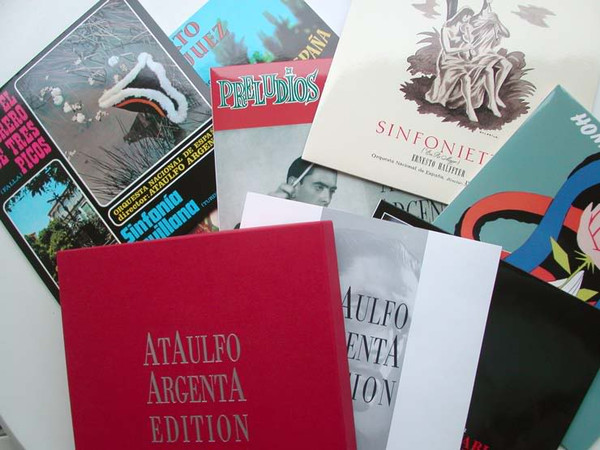
What the hell! It was going into my secondary pile of stuff to come back for if I had the time and space.
I have written extensively about the DG Original Source series, and naturally several titles were on my list, but I had to limit myself. Karajan and Gundula Janowitz’s Four Last Songs will probably get a repress, I gambled, so that stayed. Likewise Ozawa’s superb Symphonie Fantastique - that has just been repressed and is in print. (You all should buy it now if you haven’t already).
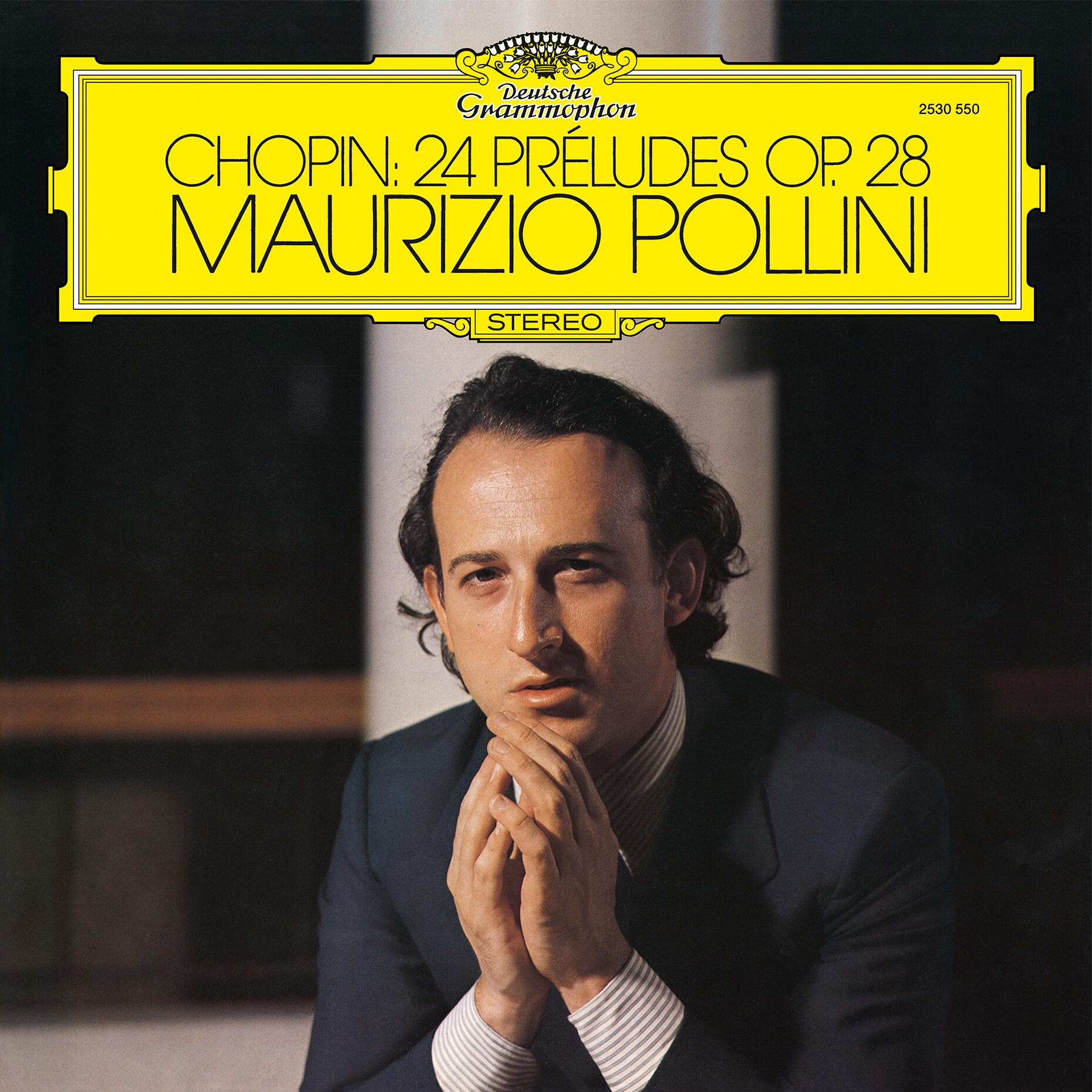
So the two OSS reissues I decided to take were the recent Pollini Chopin Preludes (which I reviewed on my YouTube channel, and which my colleague Michael Johnson reviewed here), and the LP of Hindemith’s Mathis der Maler in the William Steinberg box set - I just pulled that one record out and left the rest. This is a fabulous record.
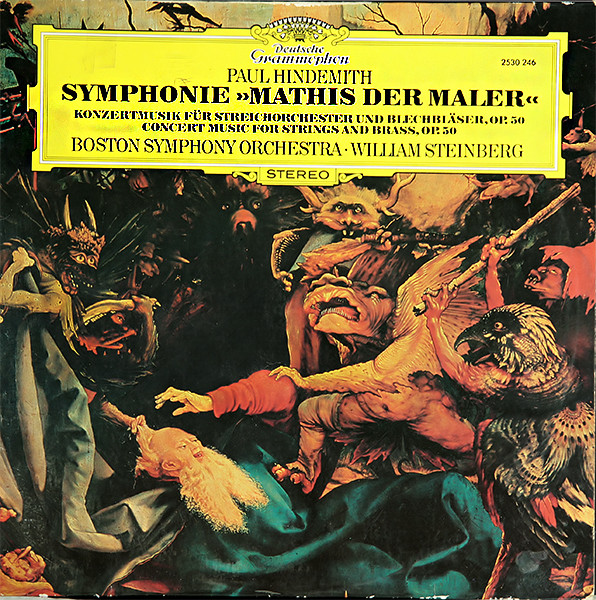
I looked longingly at the incredible Karajan Bruckner Complete Symphonies box - too bulky, plus so many other records already chosen and still to choose.
I also looked longingly at my carefully collected rows of King Super Analogue and Speaker’s Corner reissues. The clock was ticking. Impossible to choose so I chose none, and immediately regretted it. I went back and pulled out two Kings: Ansermet conducting Sheherazade (my favorite version of this warhorse)…
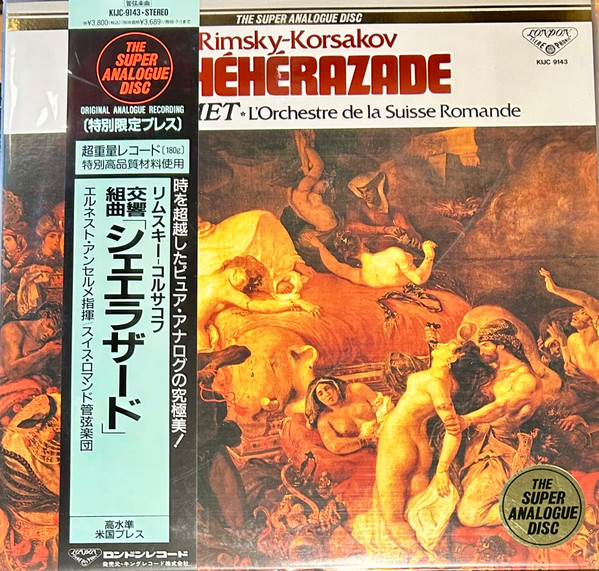
… and this beautiful reissue, which for me bests any of Fournier’s later stereo recordings of the work.
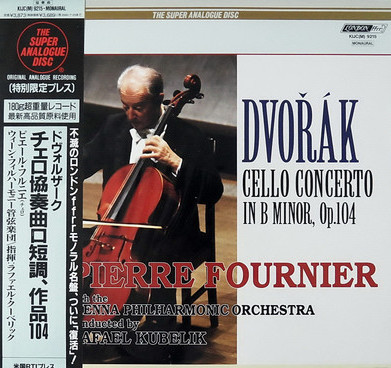
It was my father’s old beaten up copy of an earlier UK pressing of this recording that inspired me to start learning the ‘cello when I was 8. This record simply makes my heart ache in the same way it did when I first heard it.
How could I even think of leaving this behind!
The total so far was 46 records (including all the LPs within the couple of box sets I had selected). Way more than I had intended. If I had to take just a handful, it would be the two Milstein Columbias, the Klemperer Kurt Weill, the three Britten LPs, the Previn Shostakovich 13th, plus Clair de Lune and the three Classic Mercurys - 11 records.
In Part 2 I continue choosing records from my rock, jazz, and film music collections.


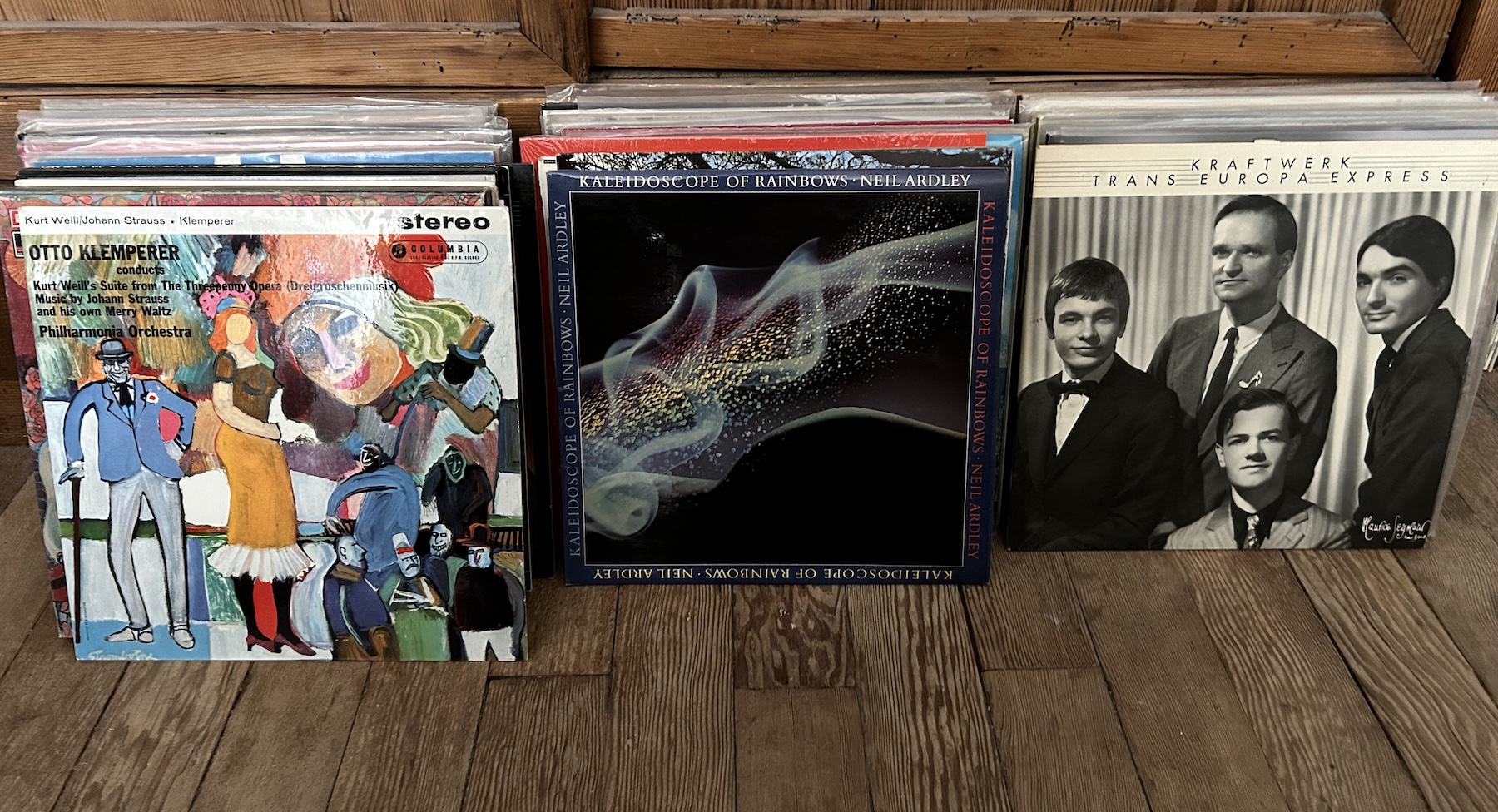




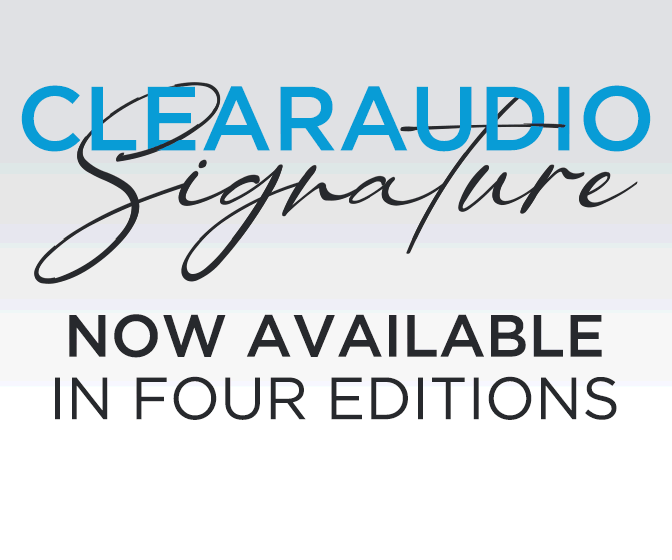

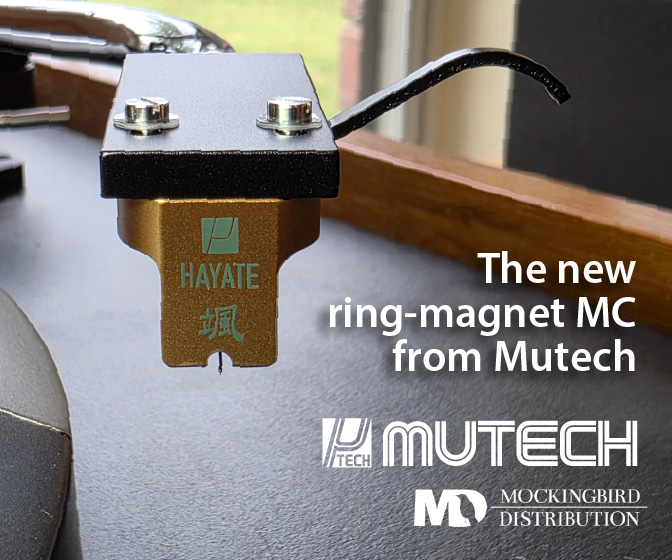
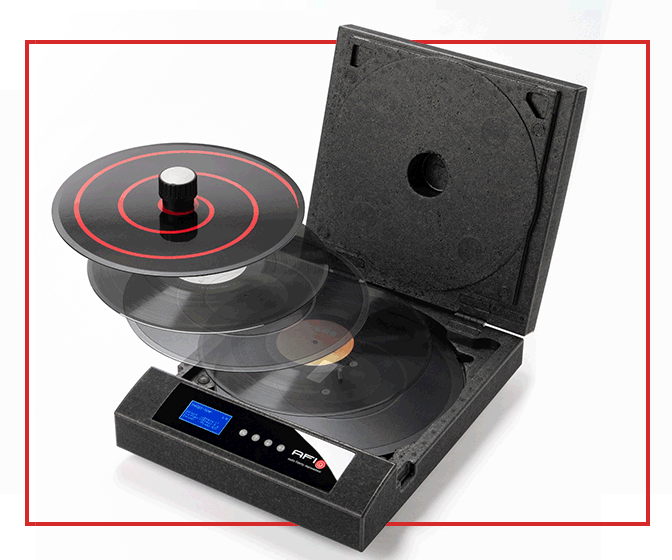







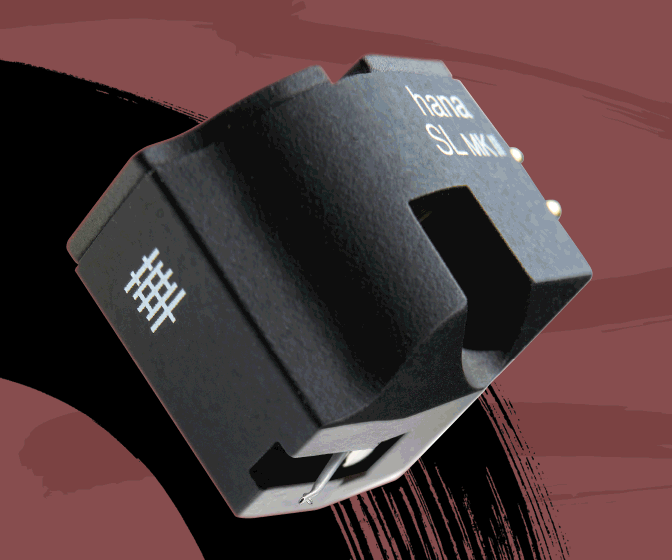

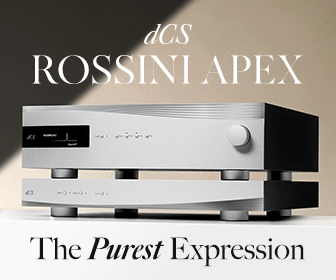
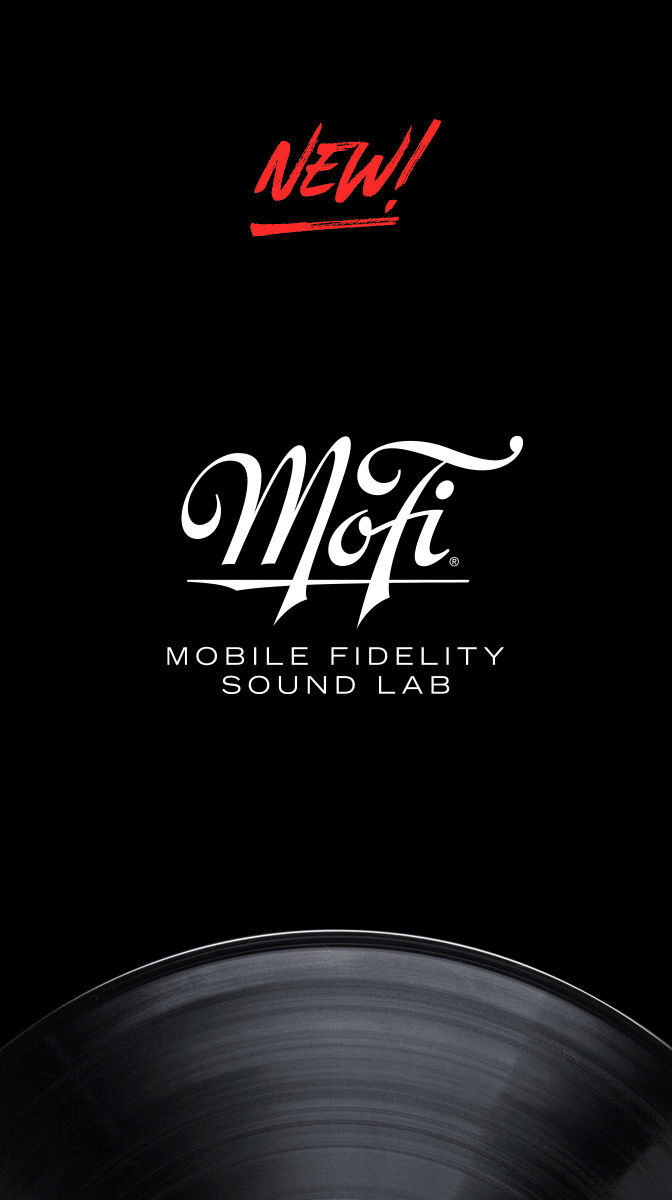

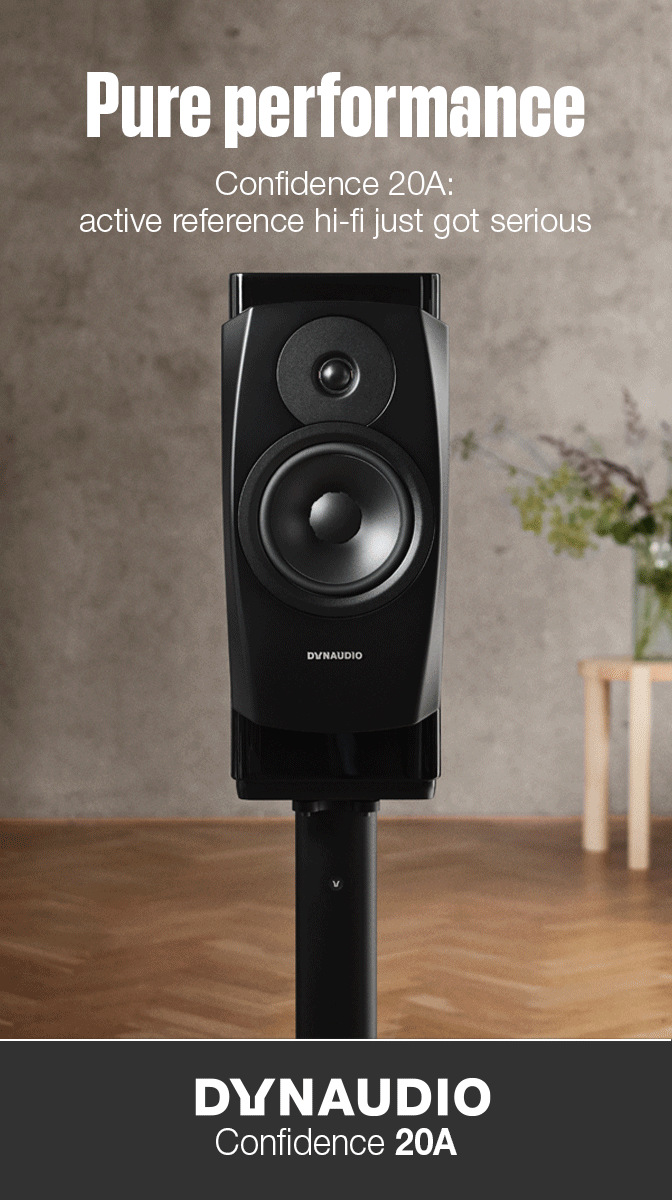



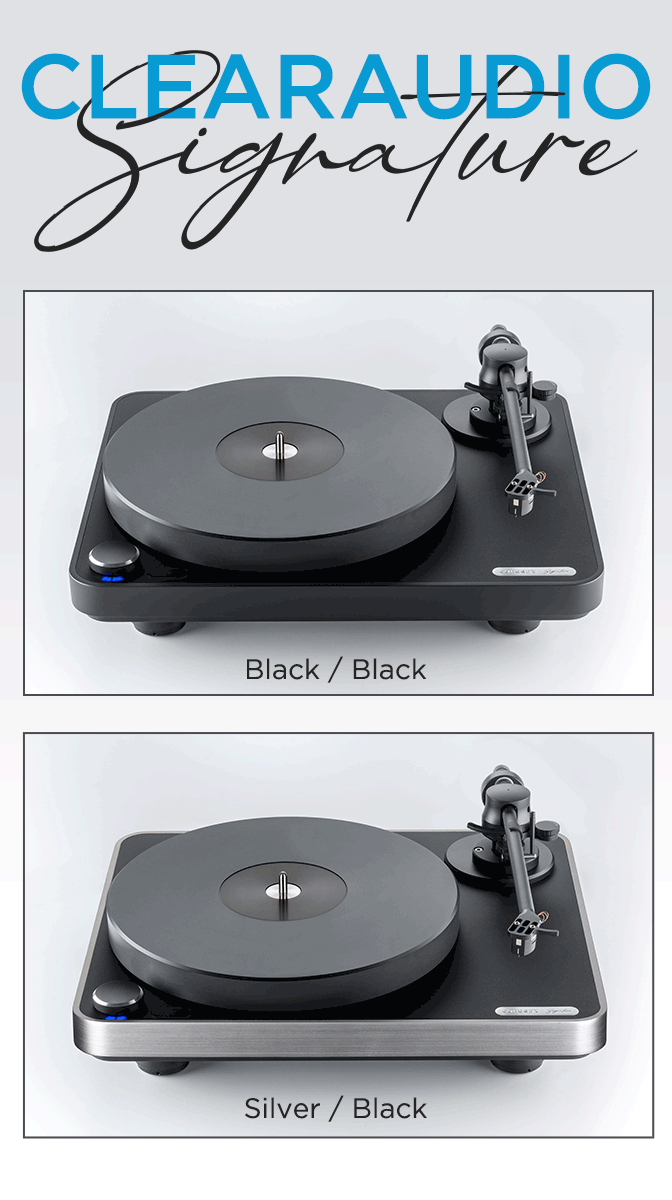
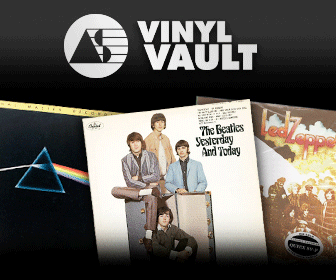

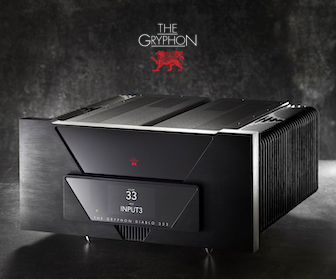
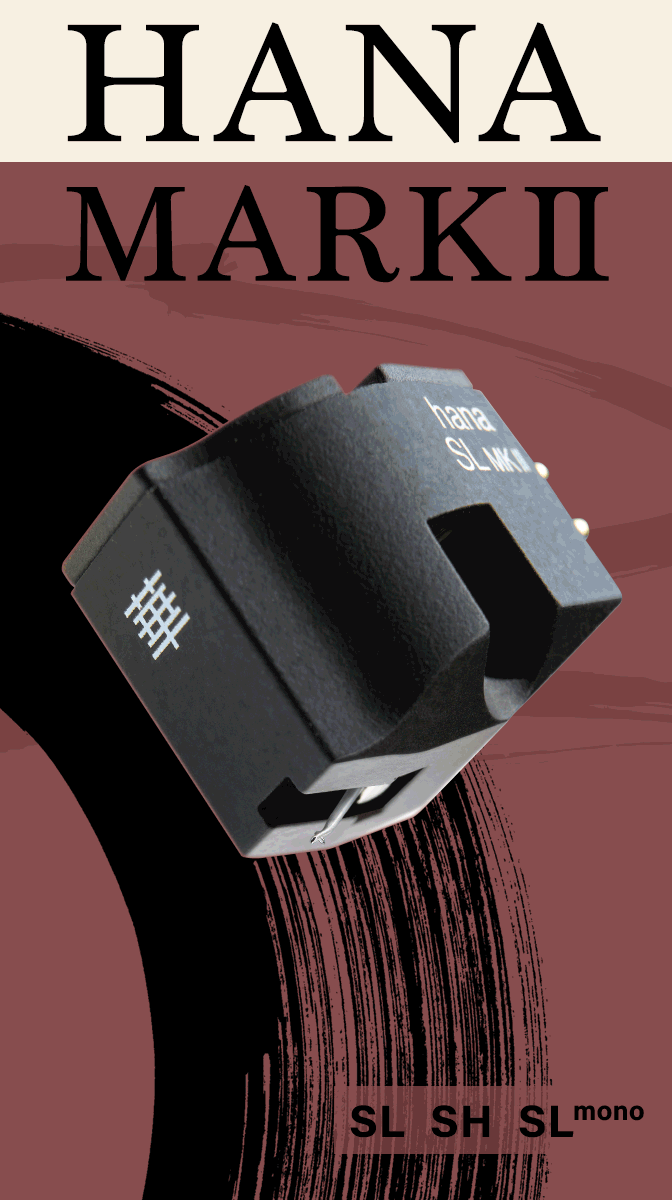


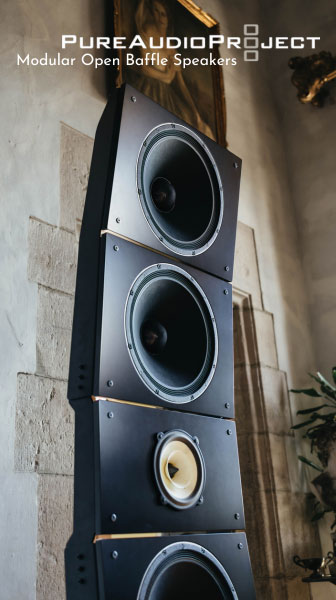






.png)








